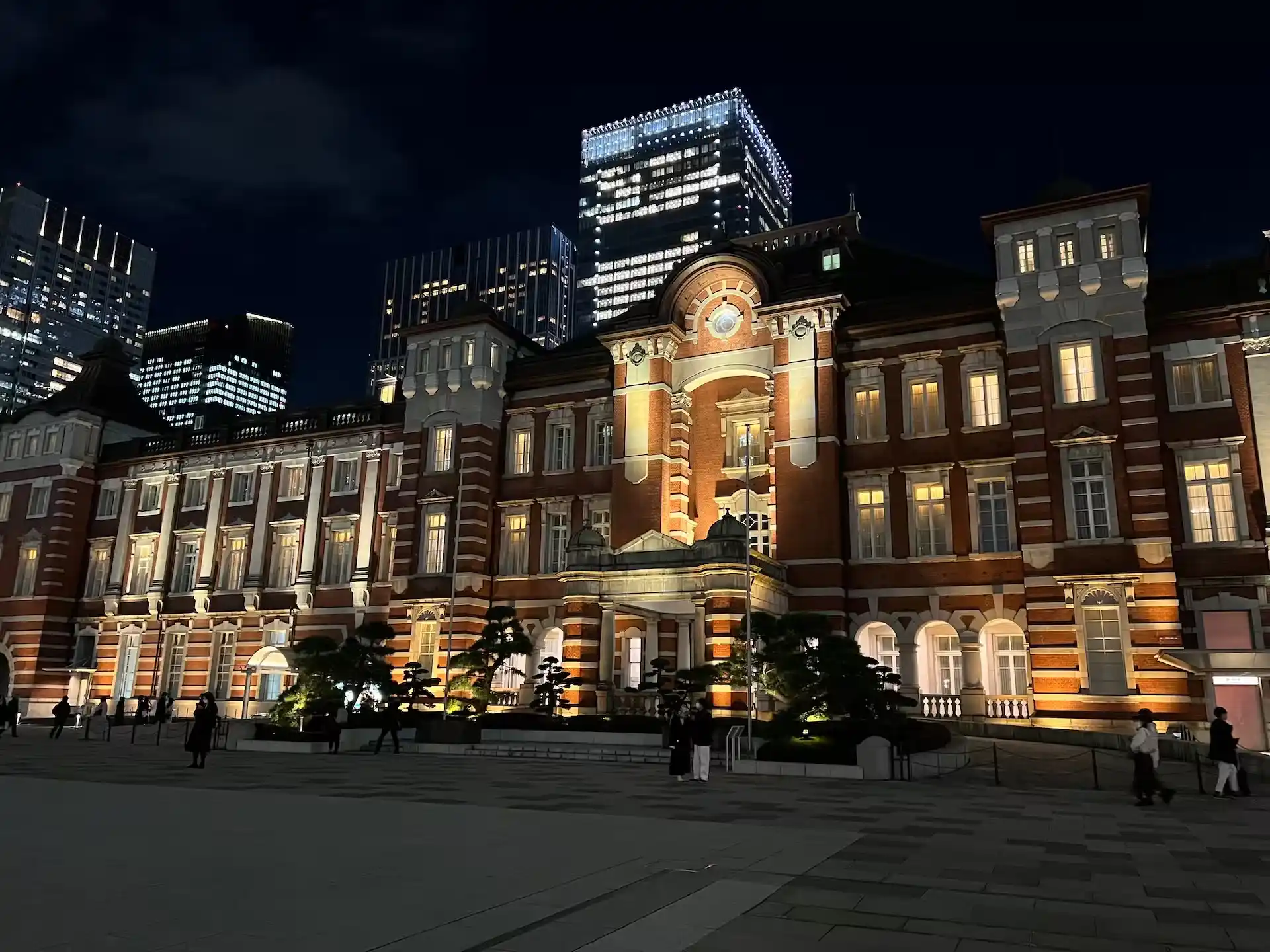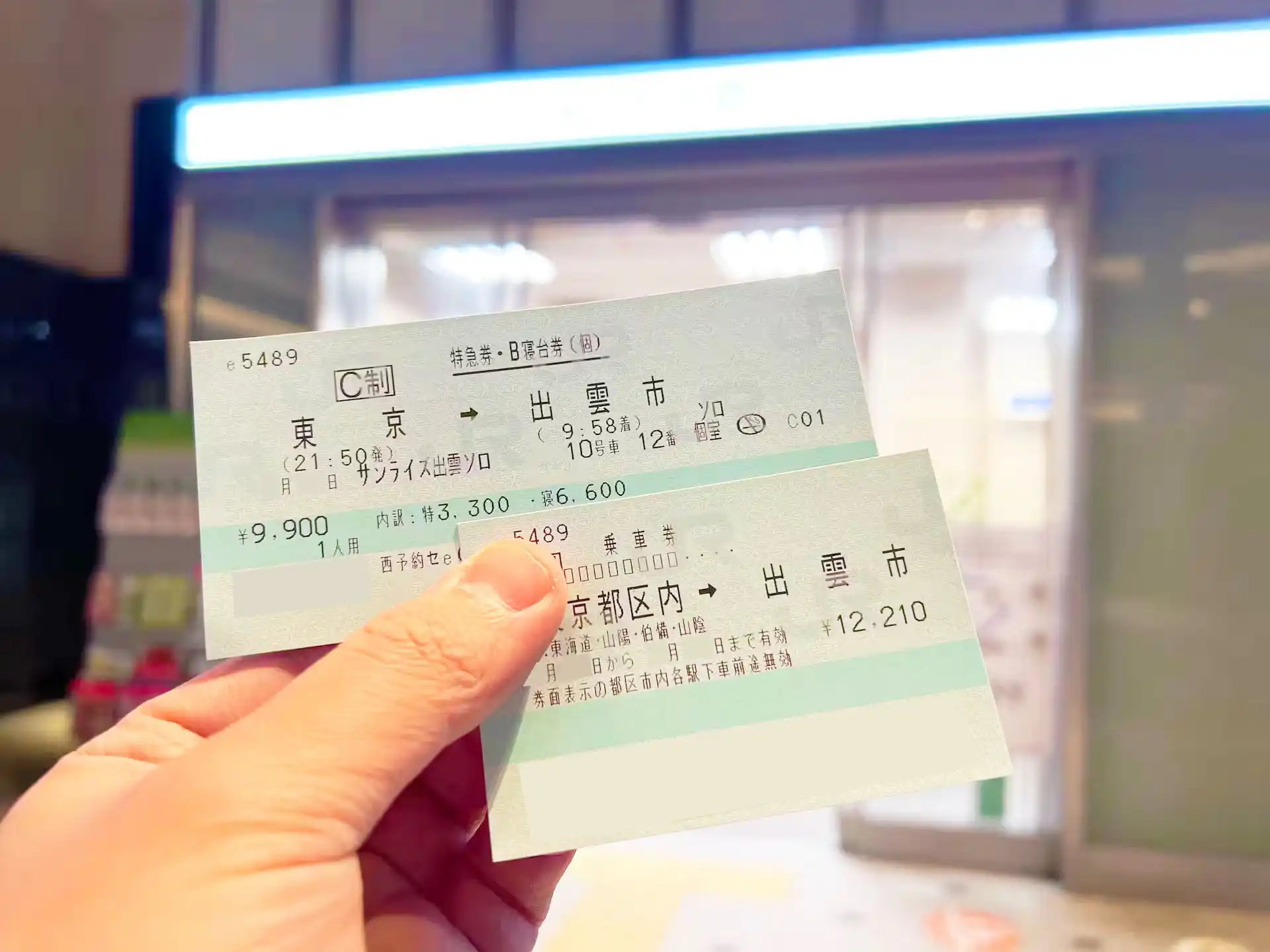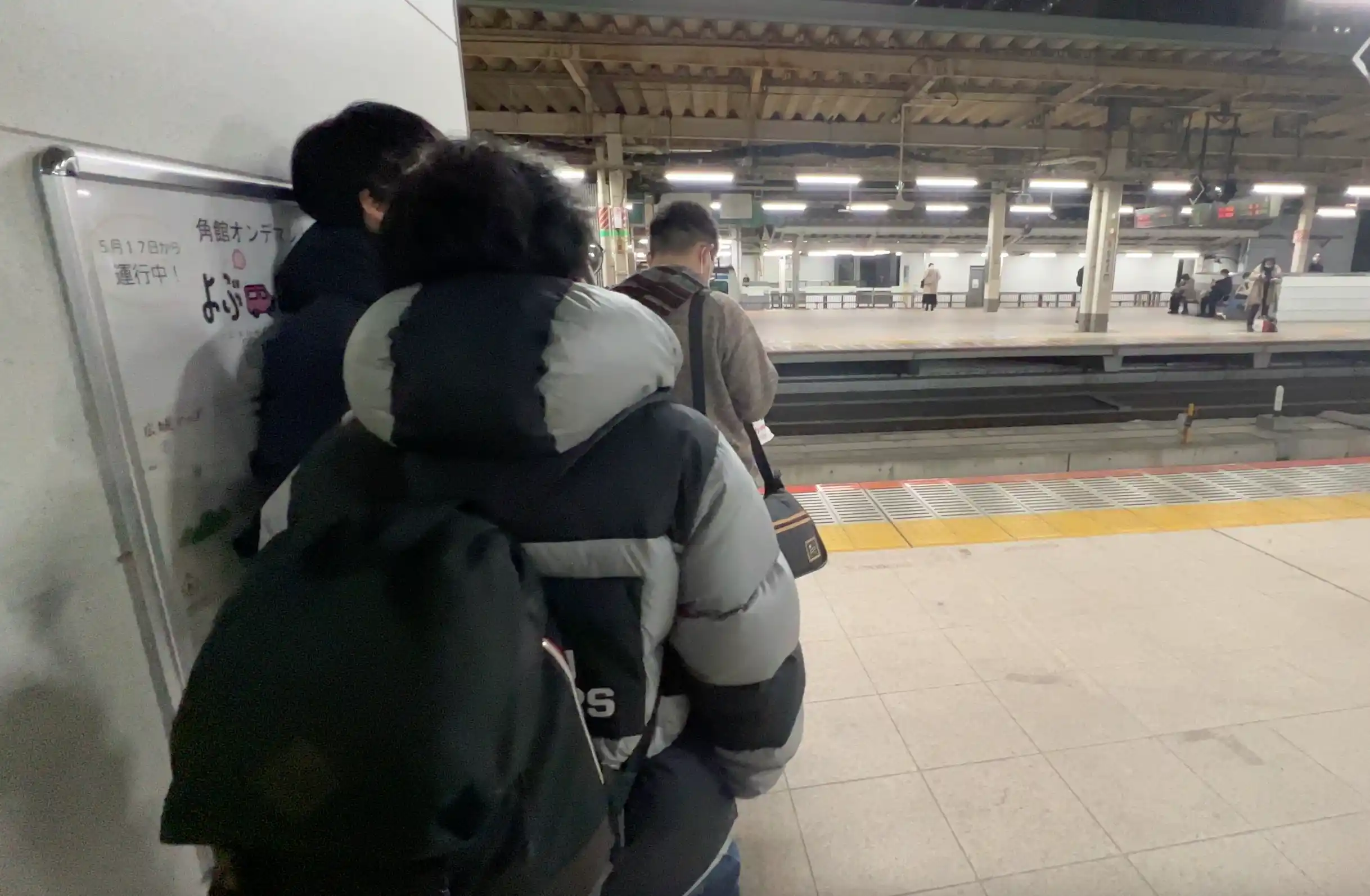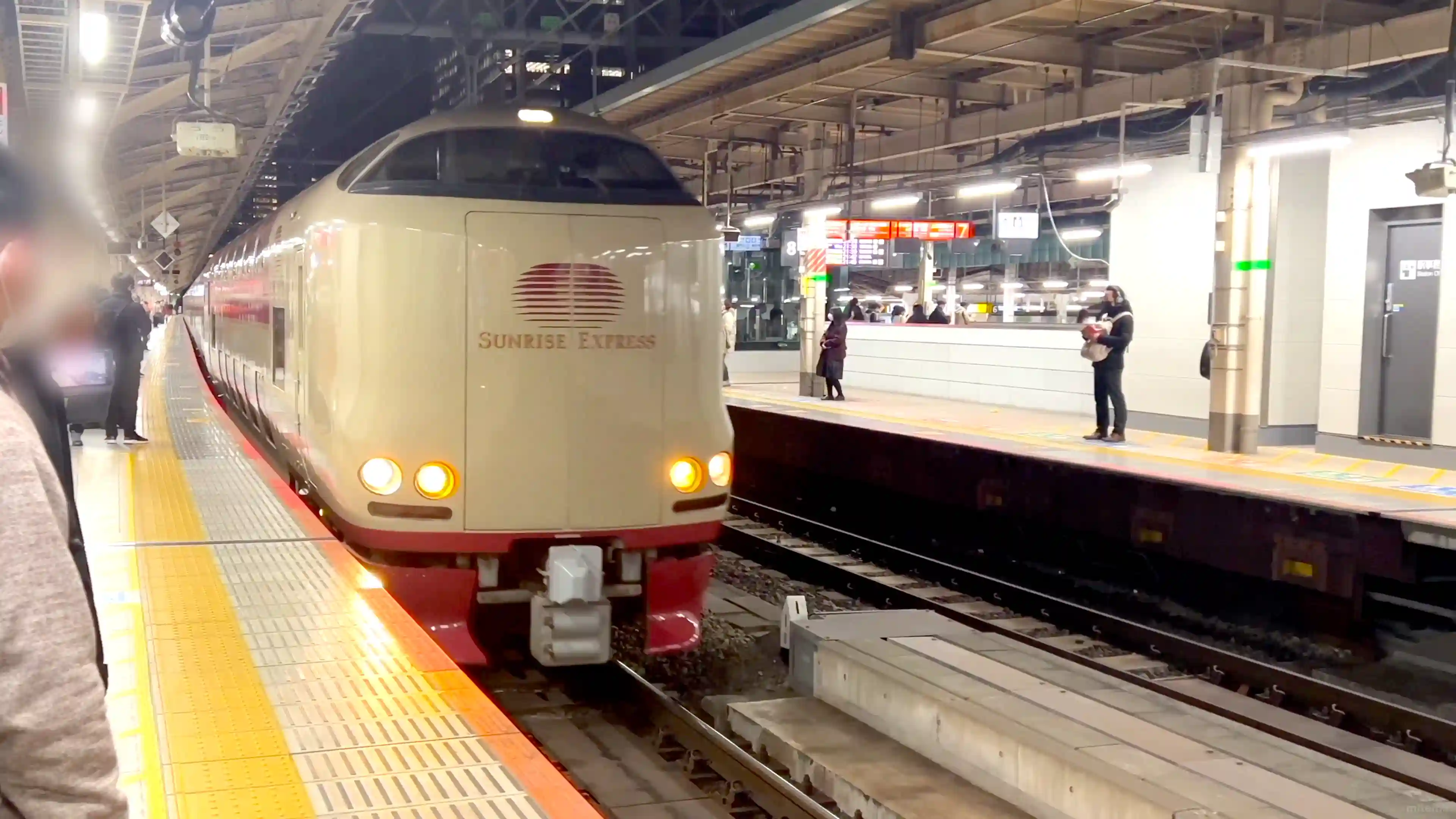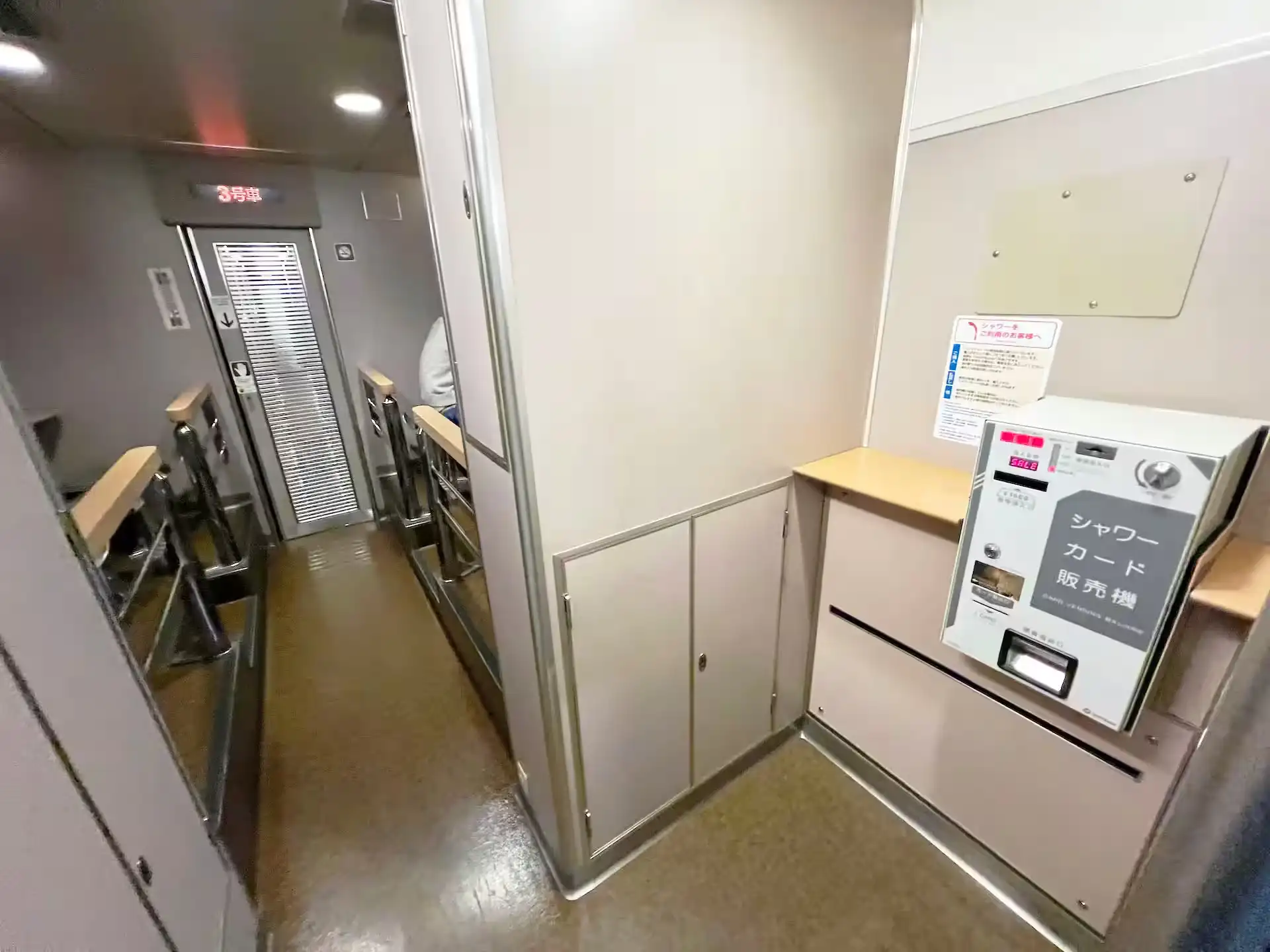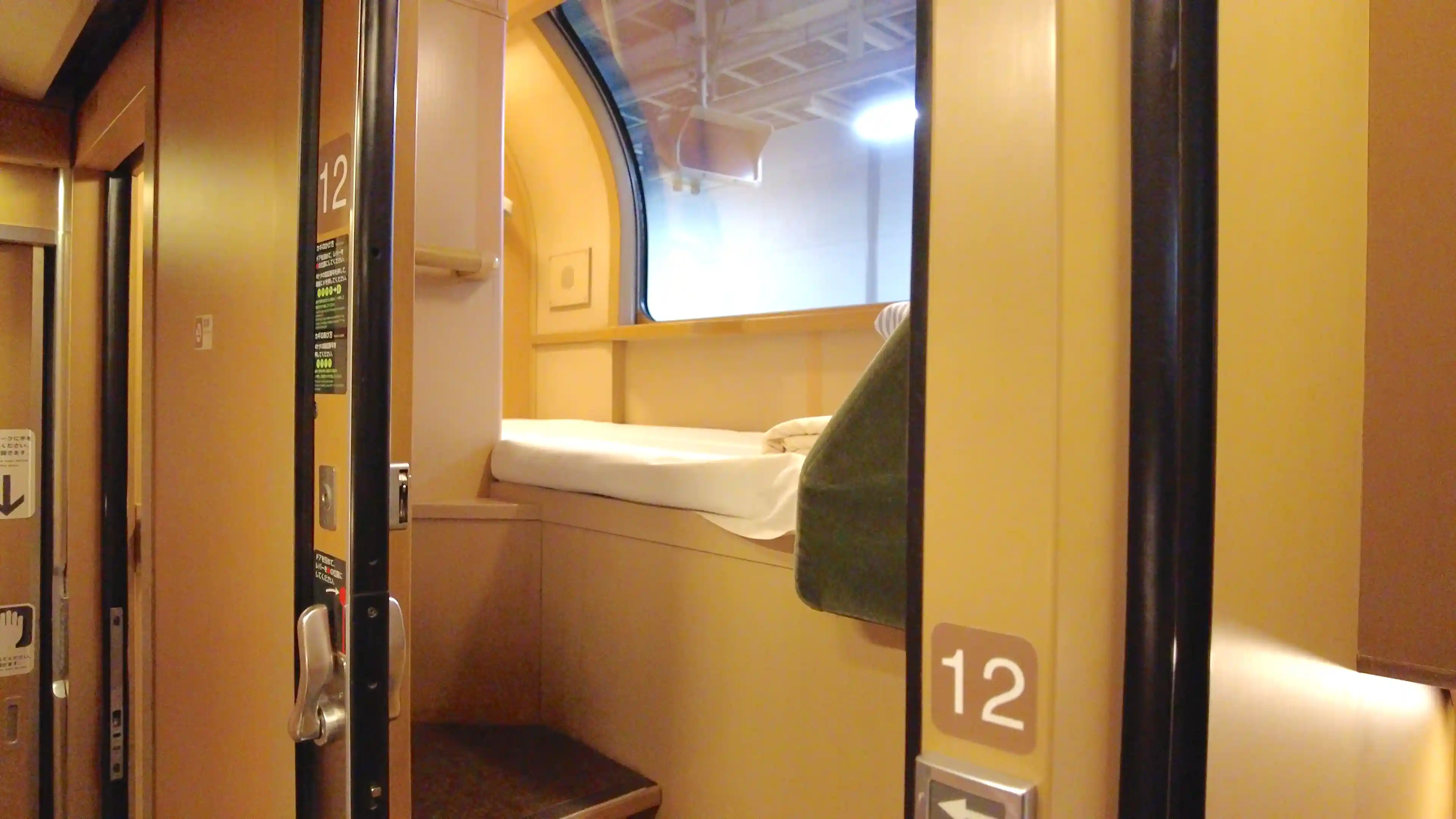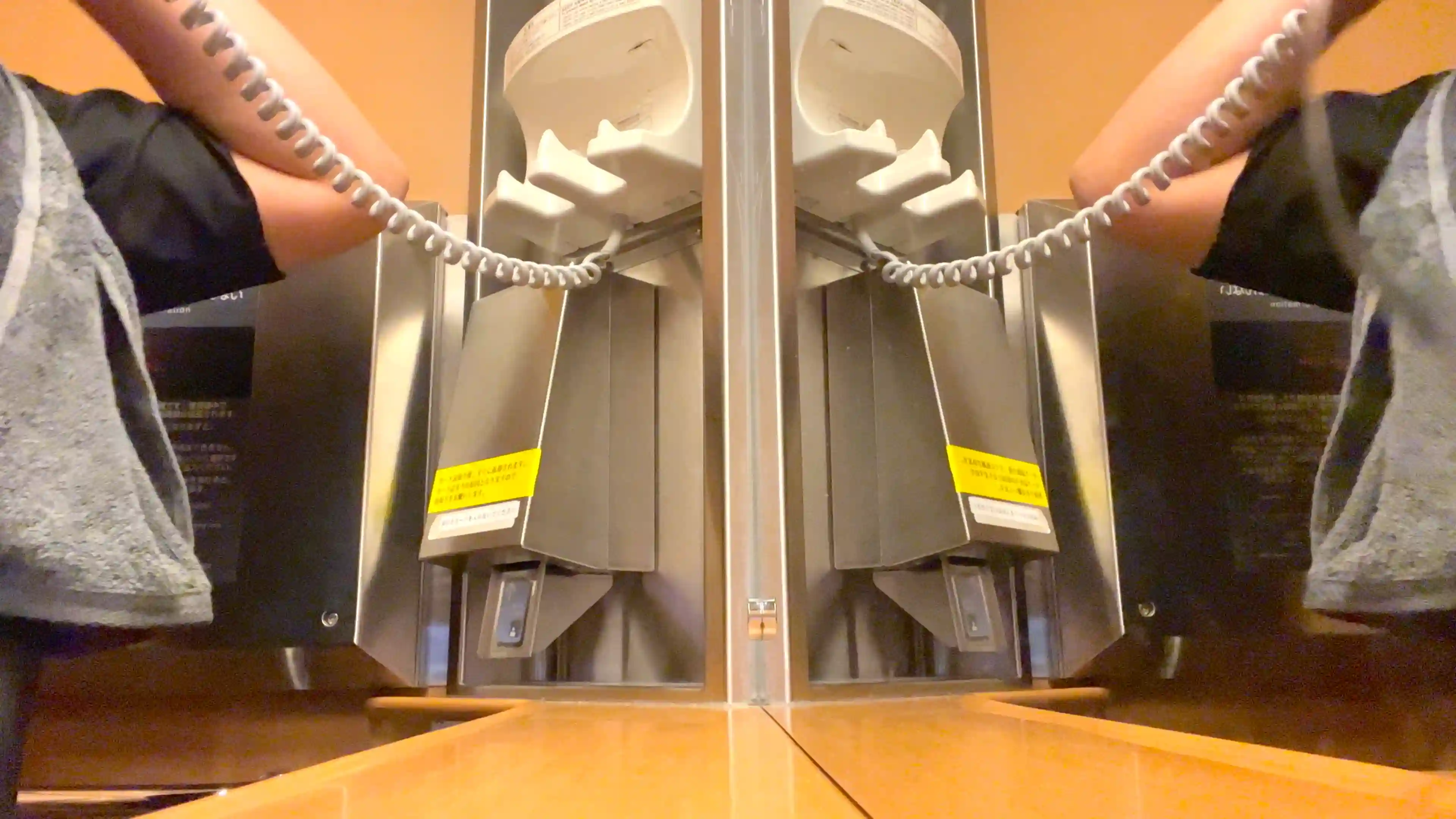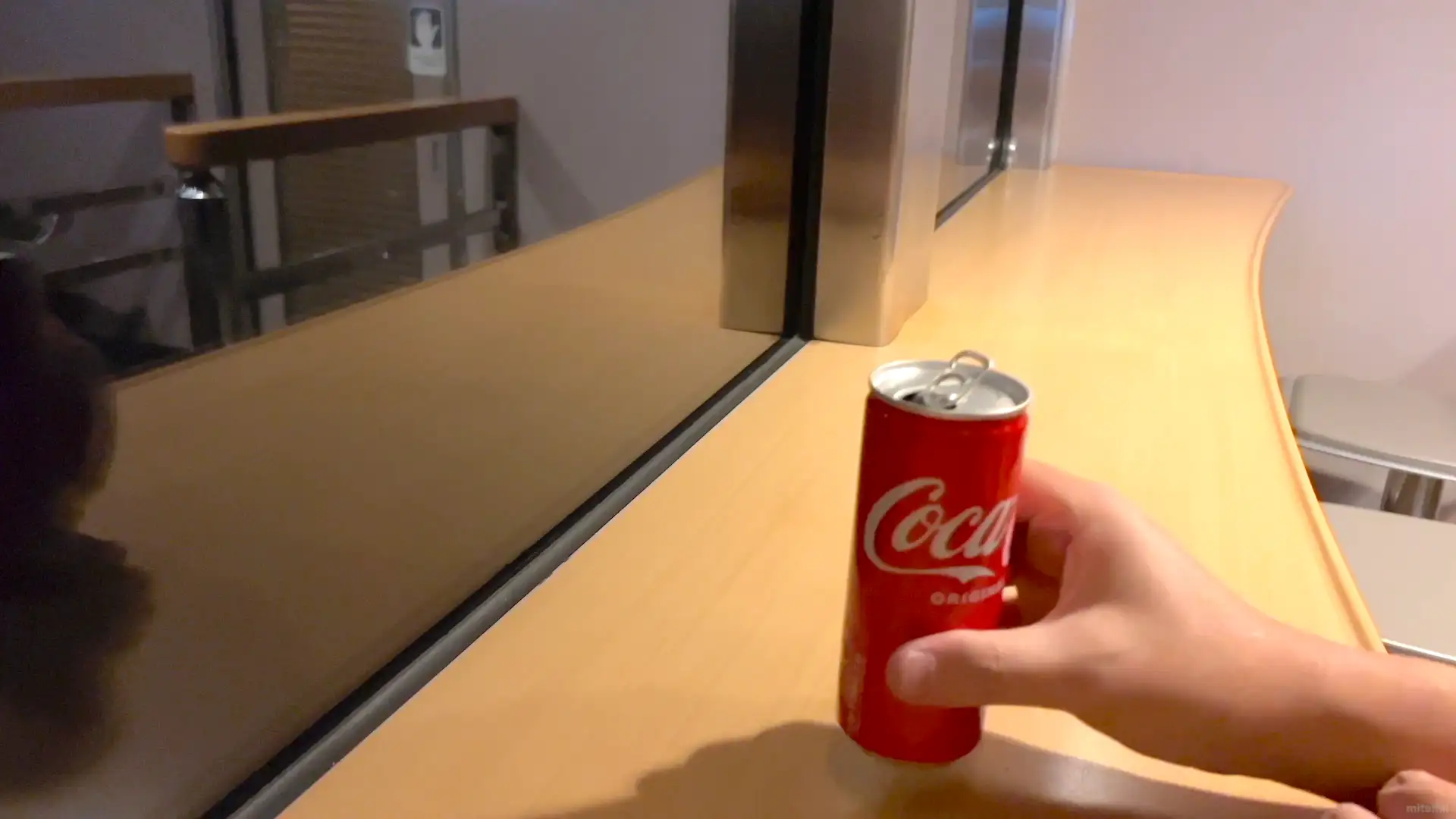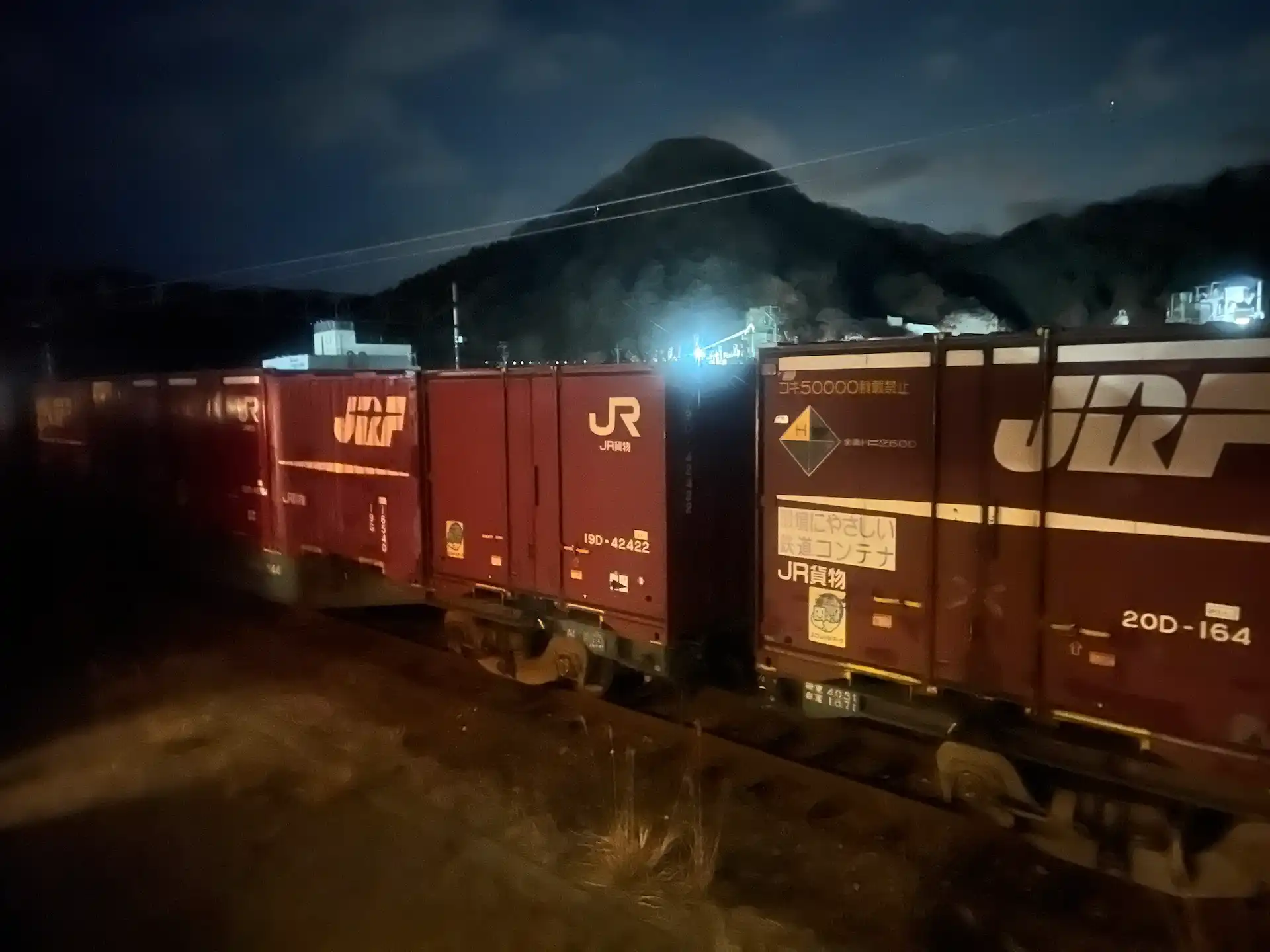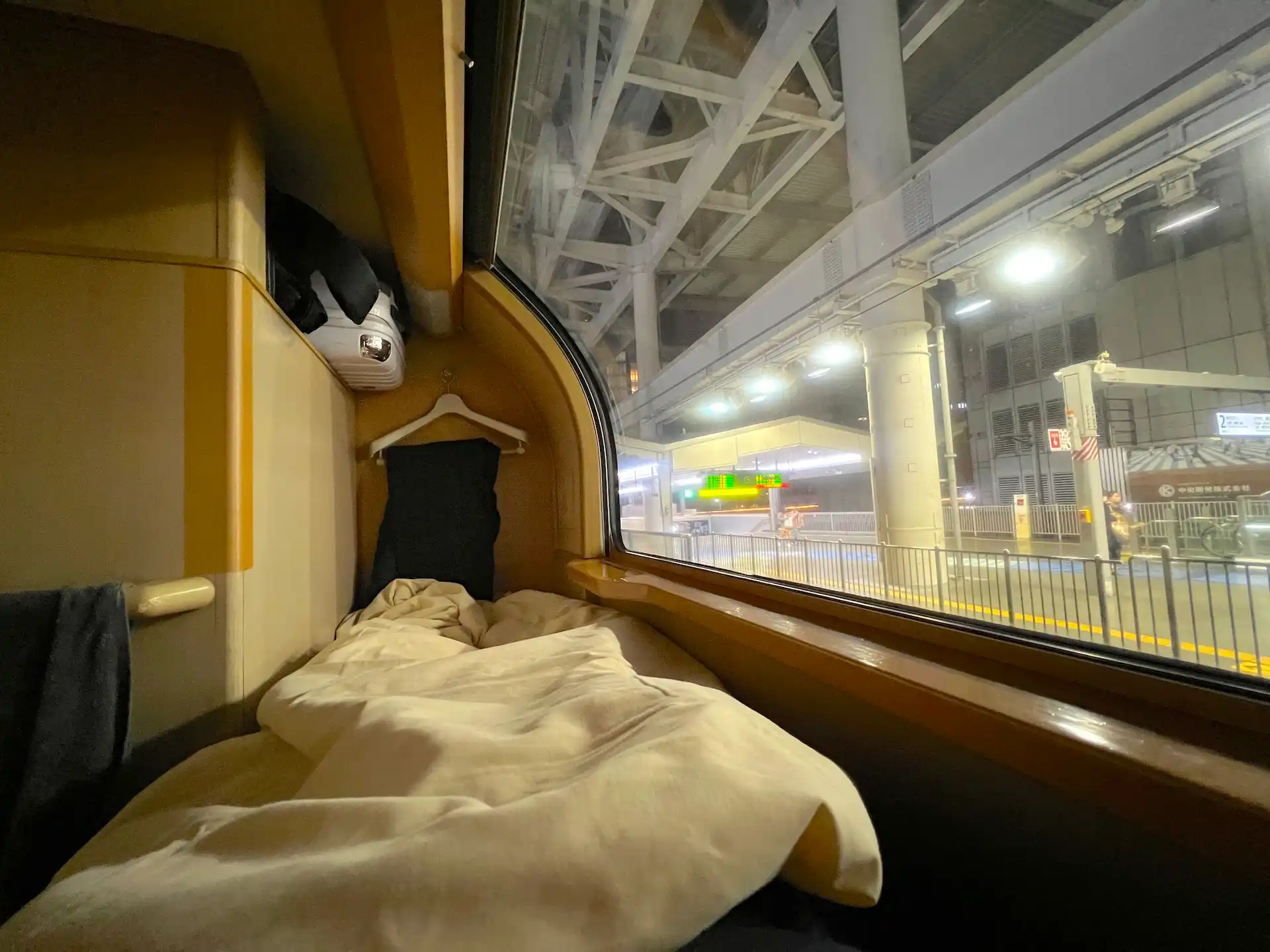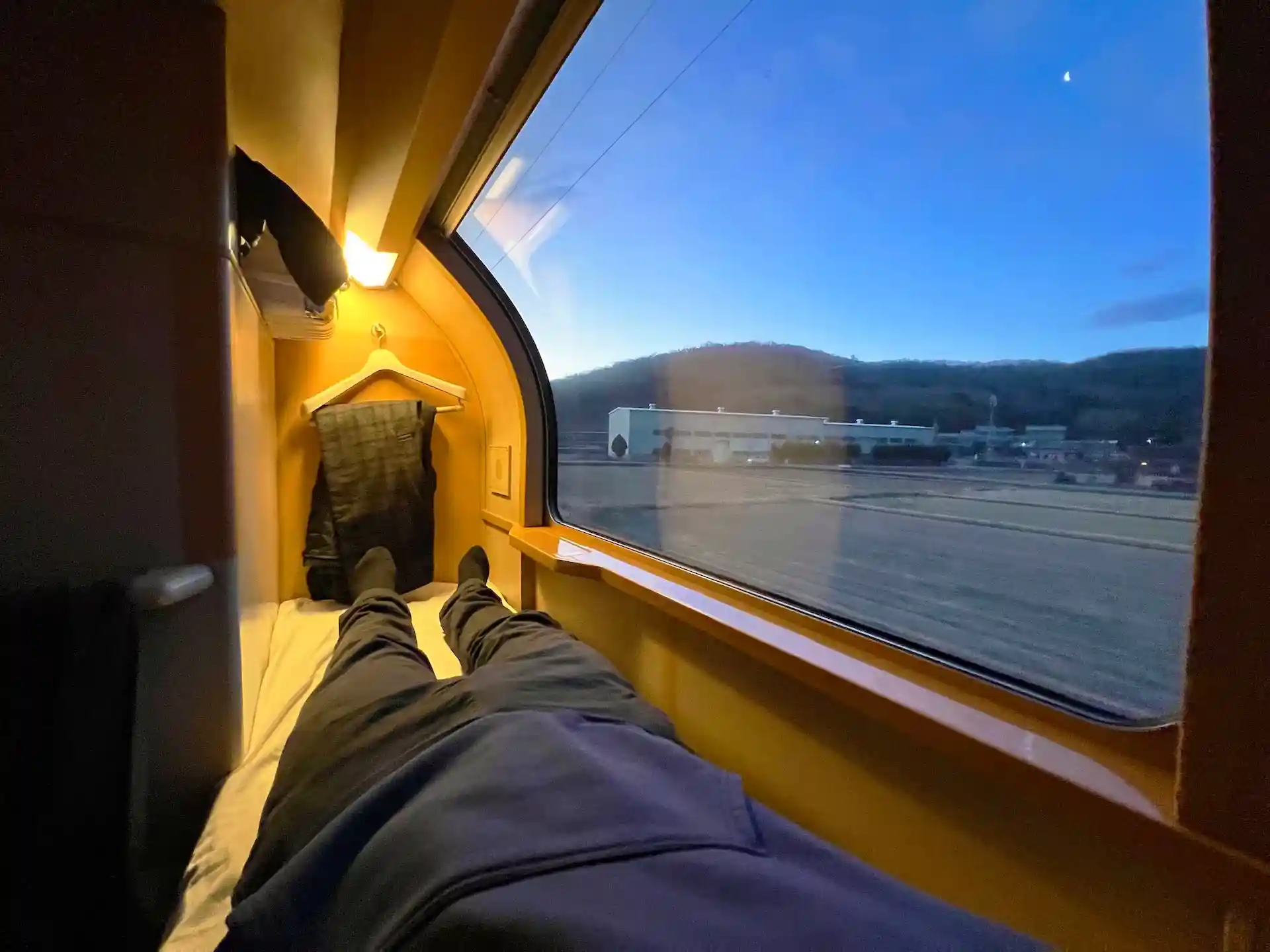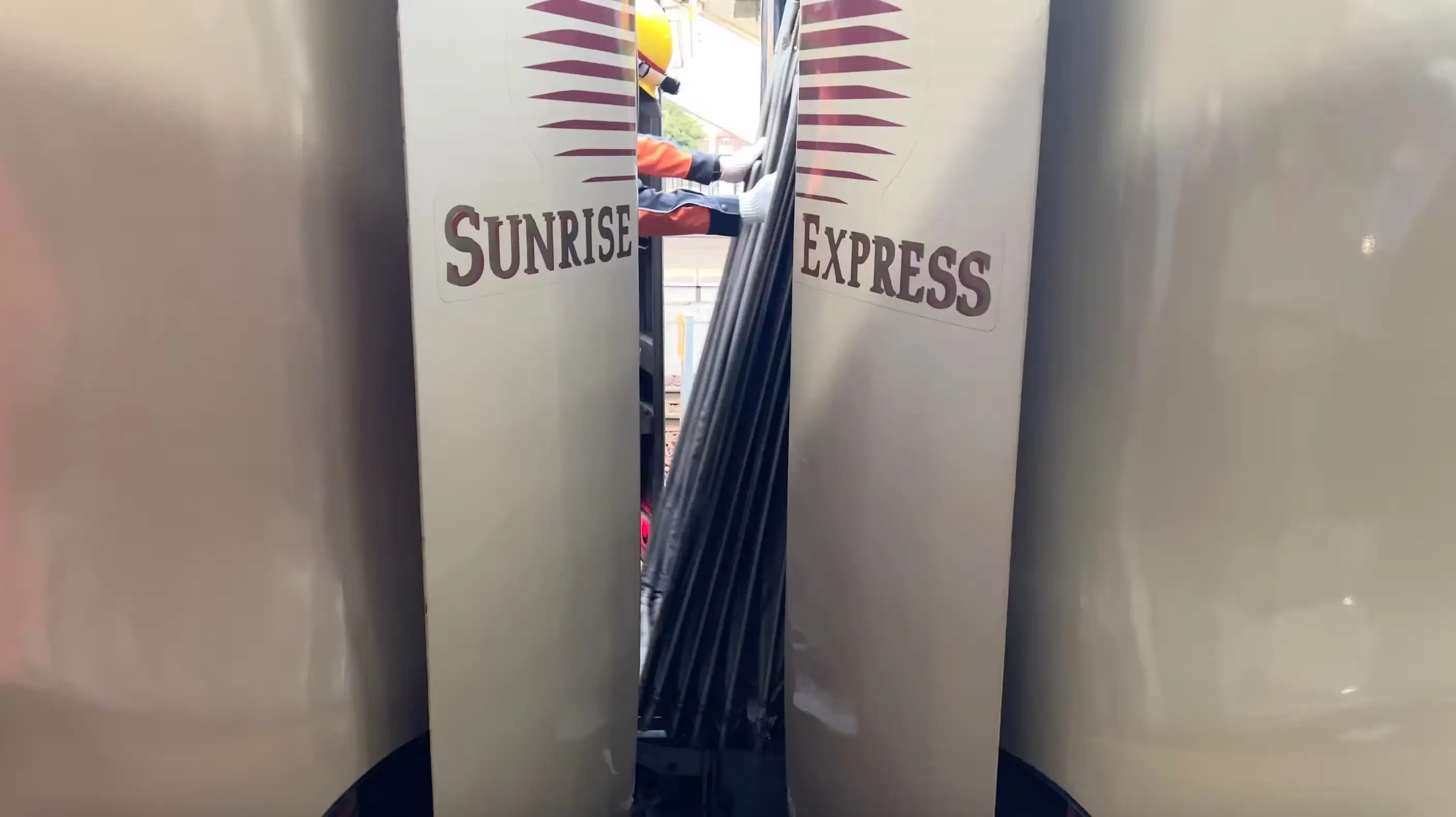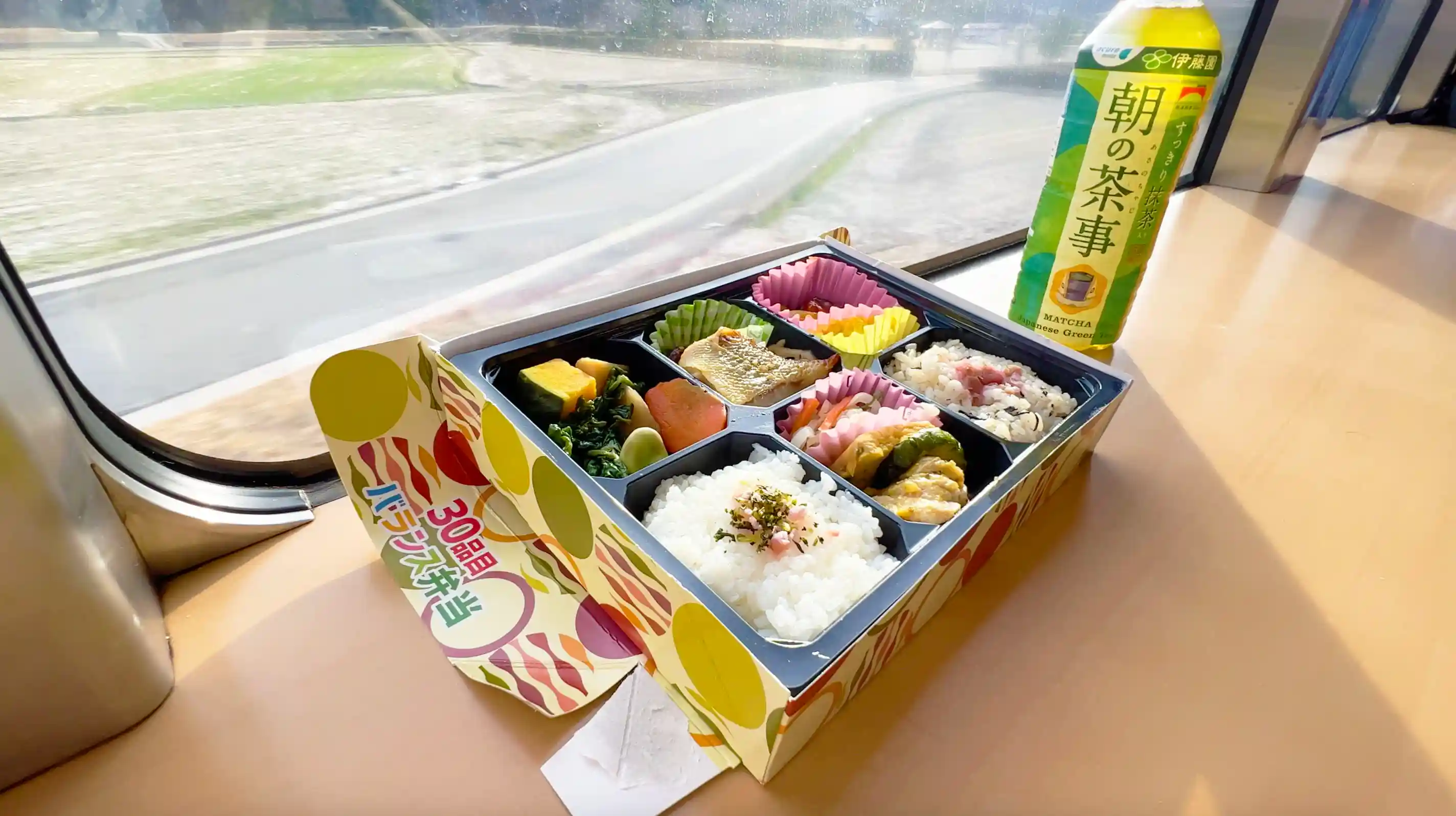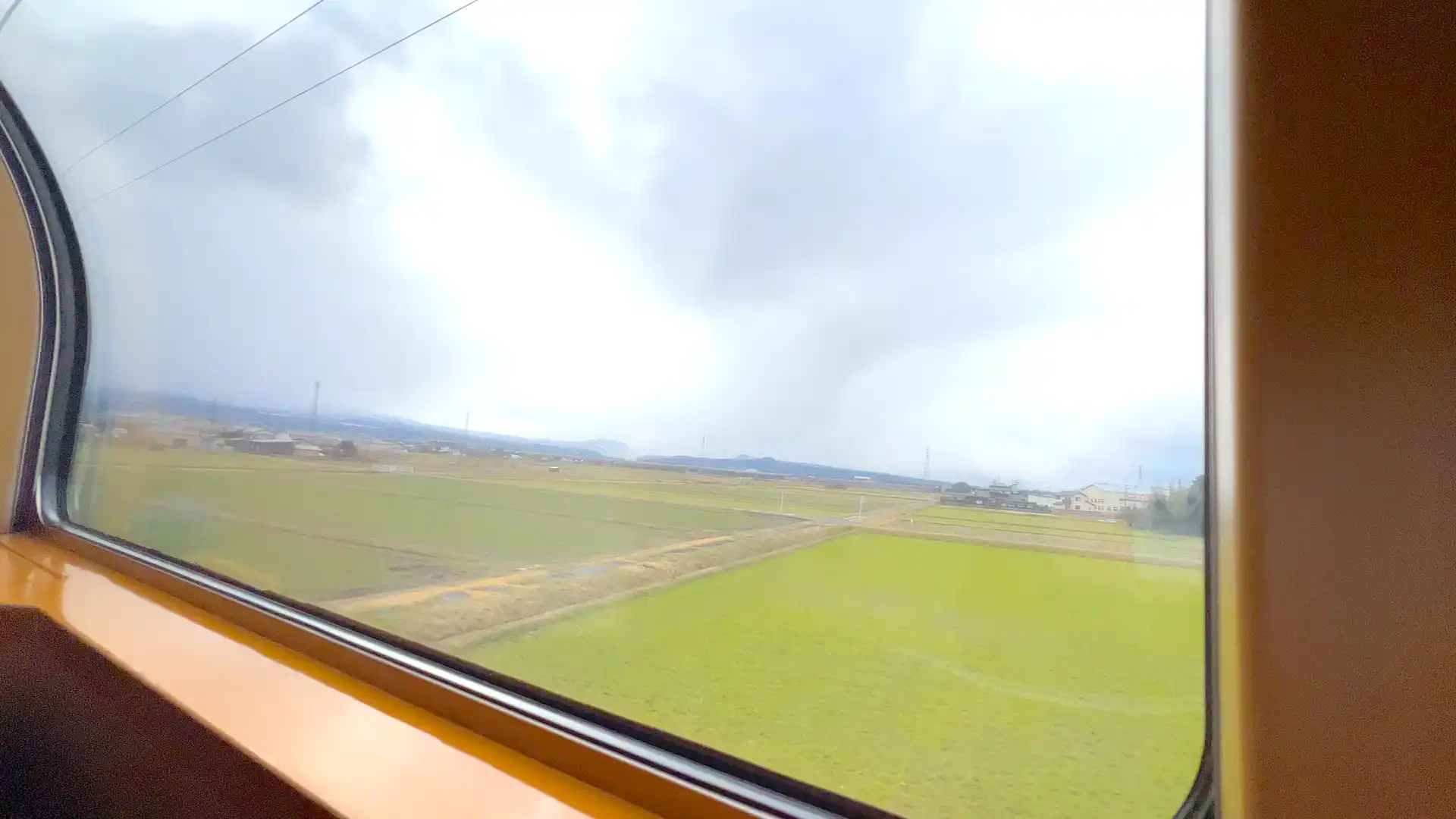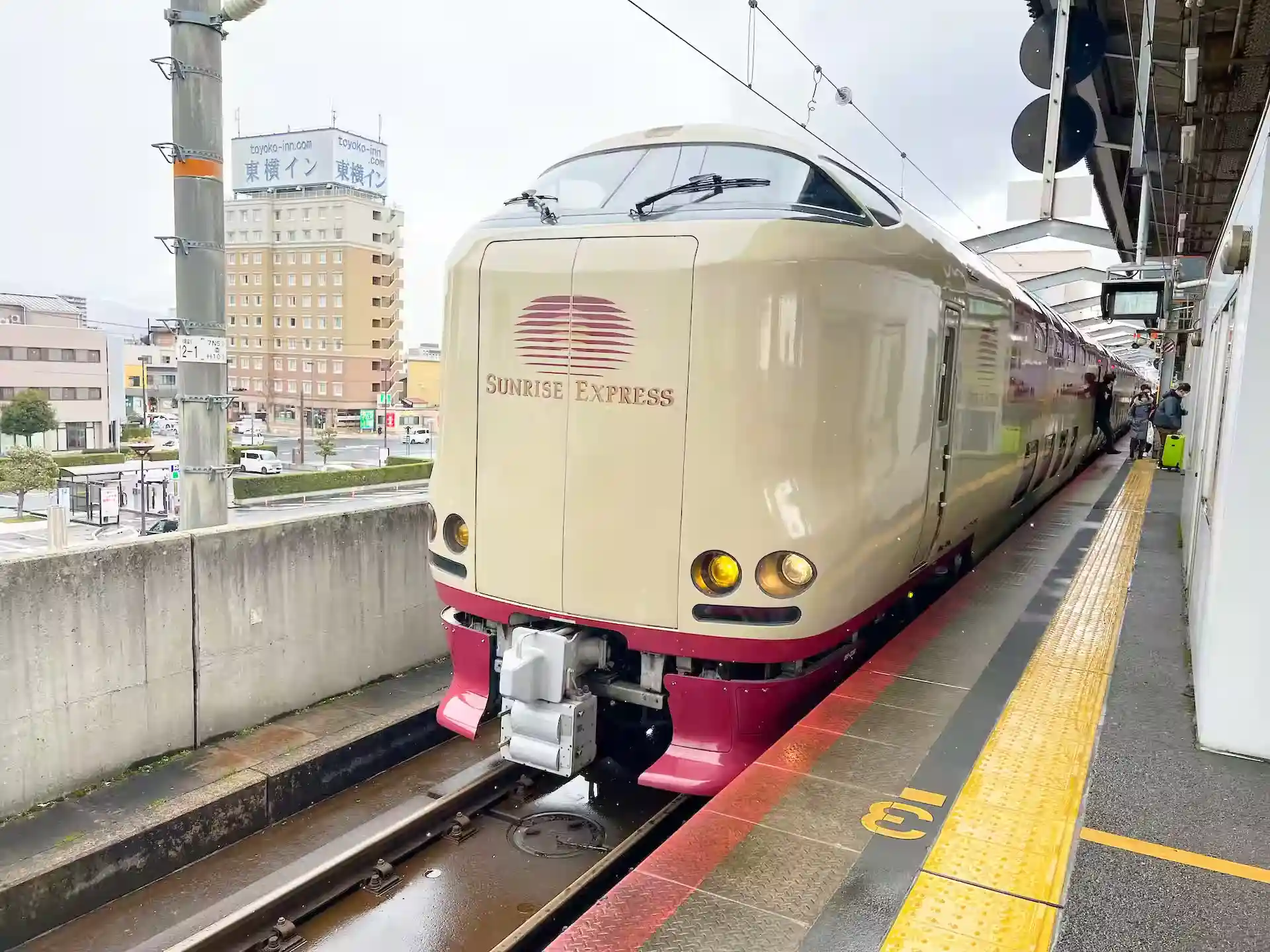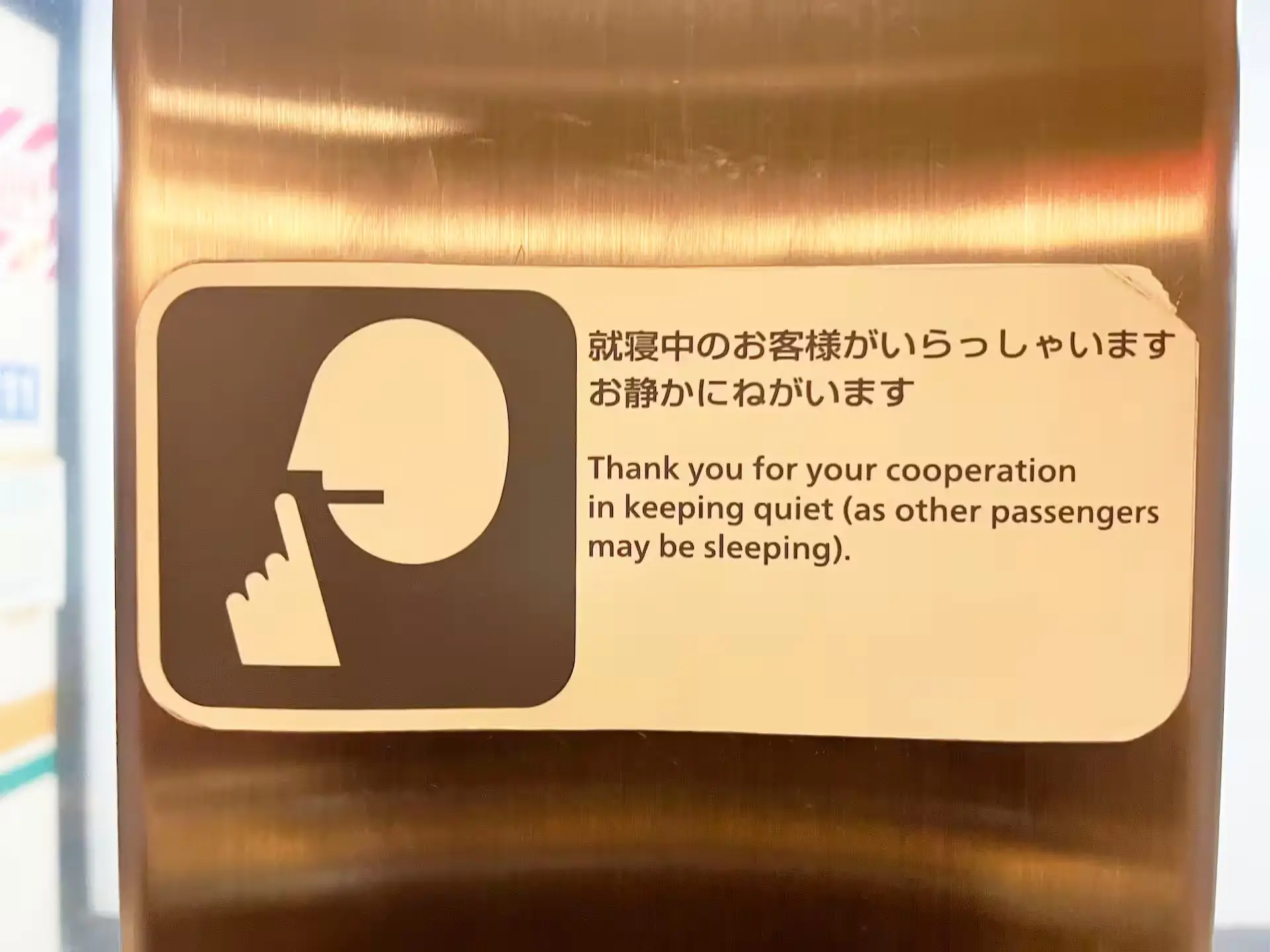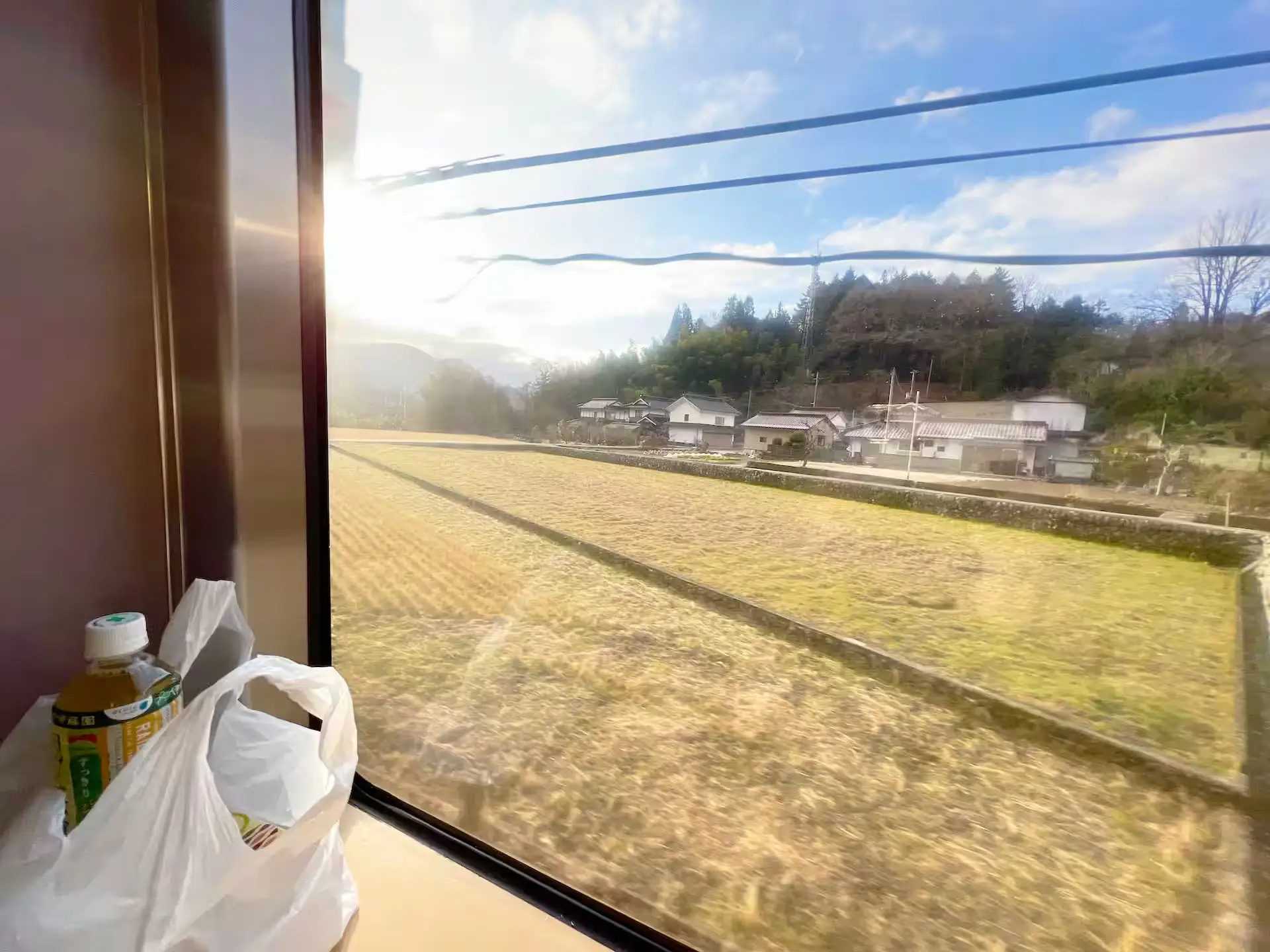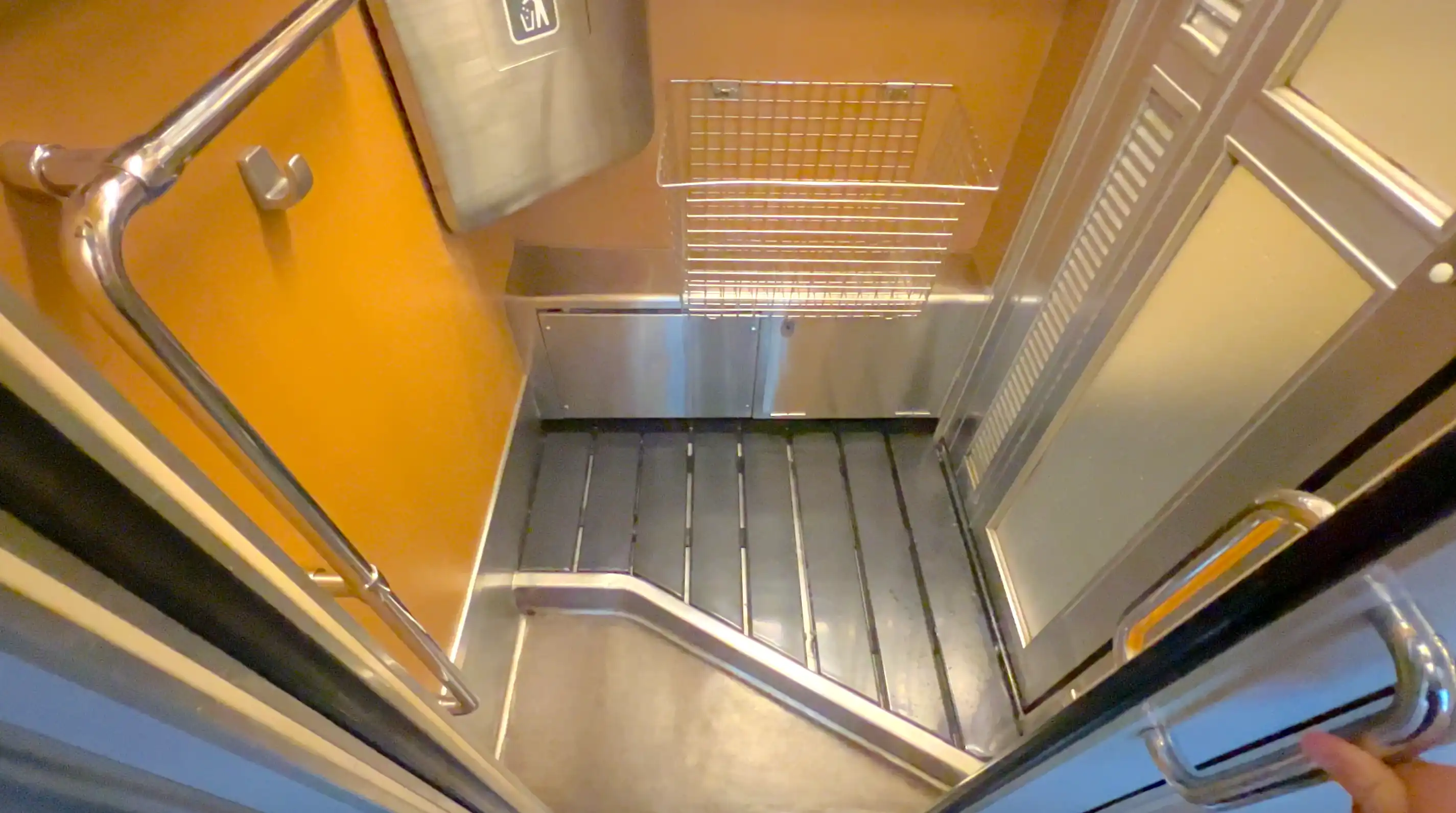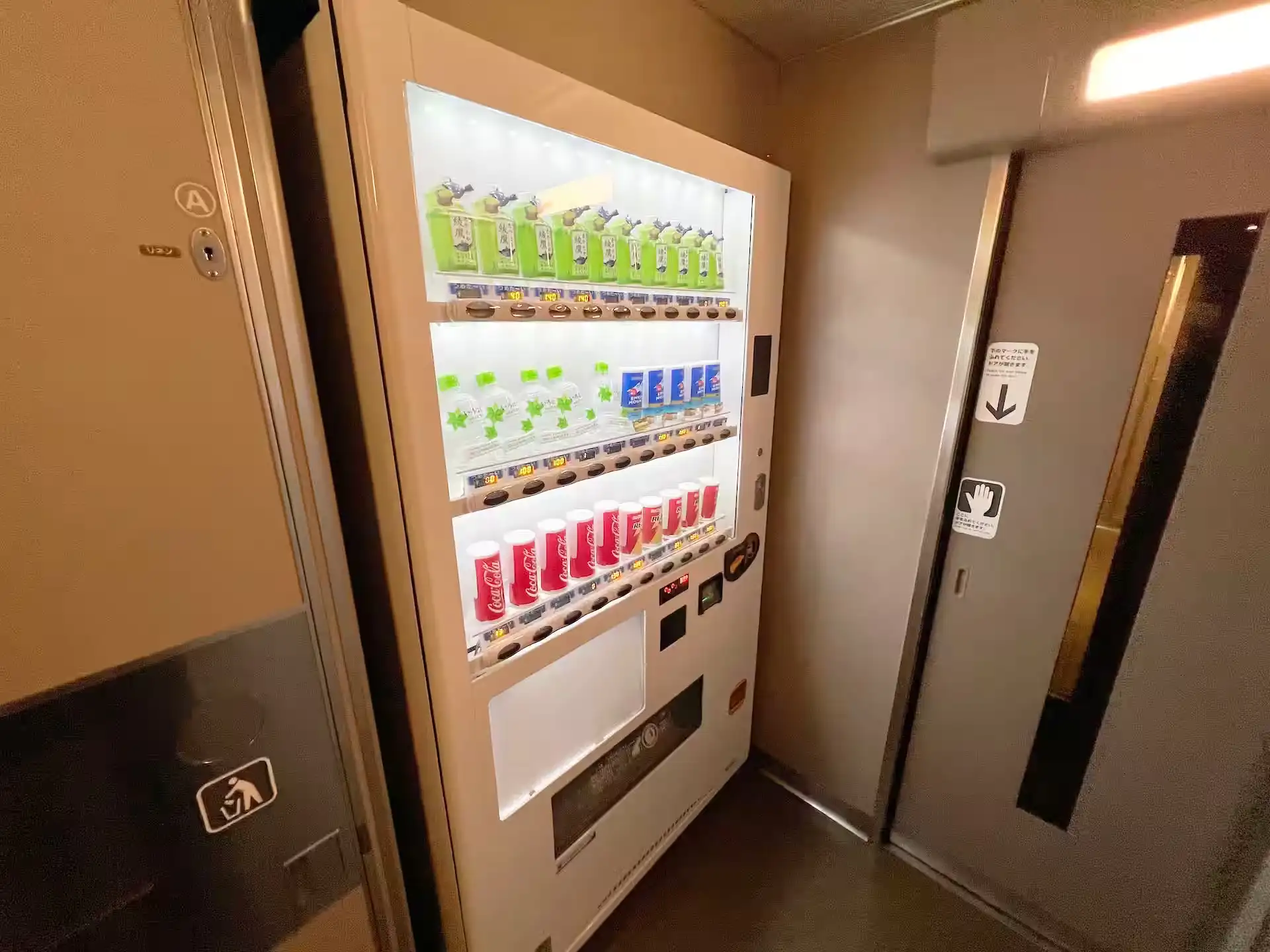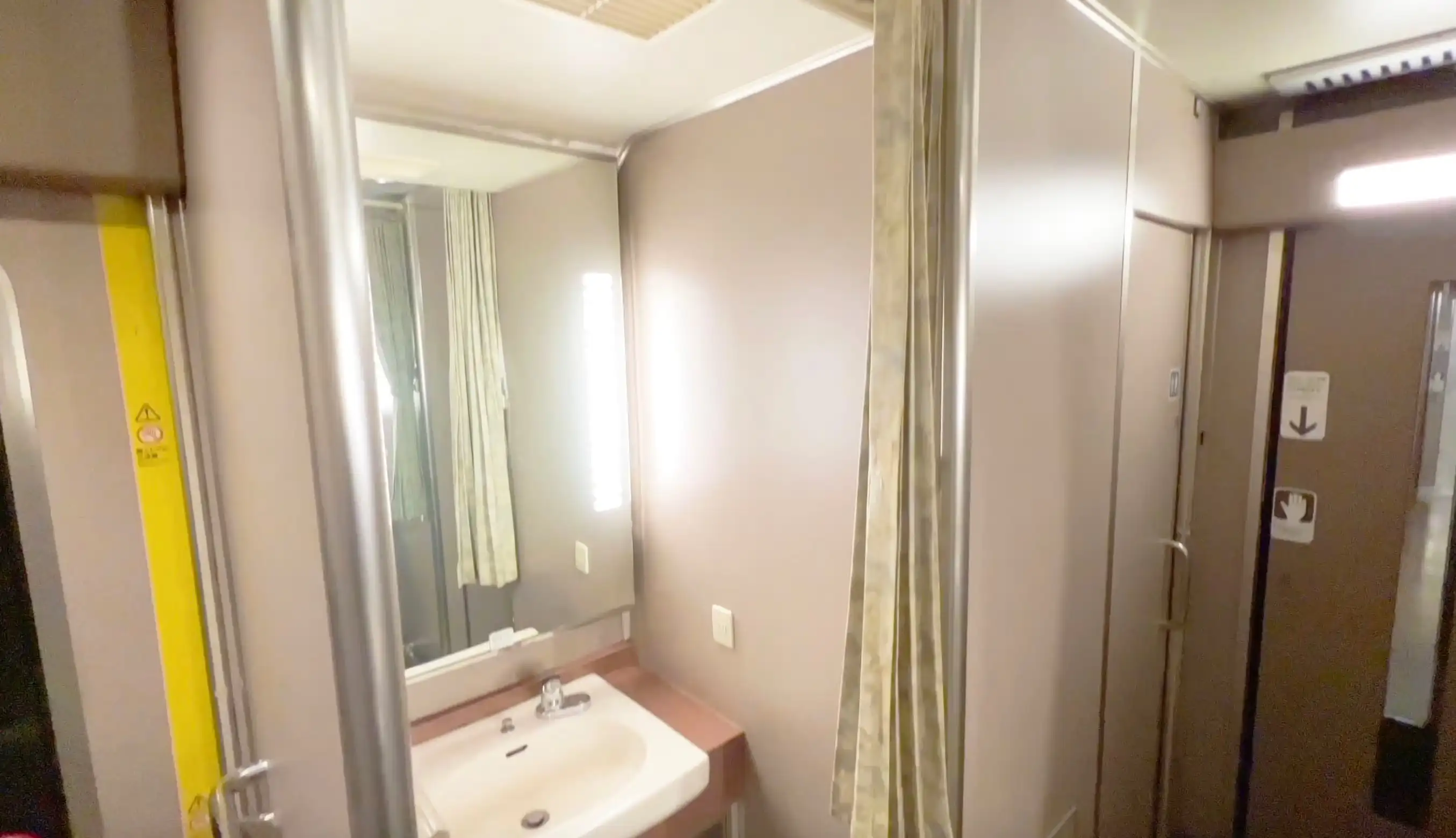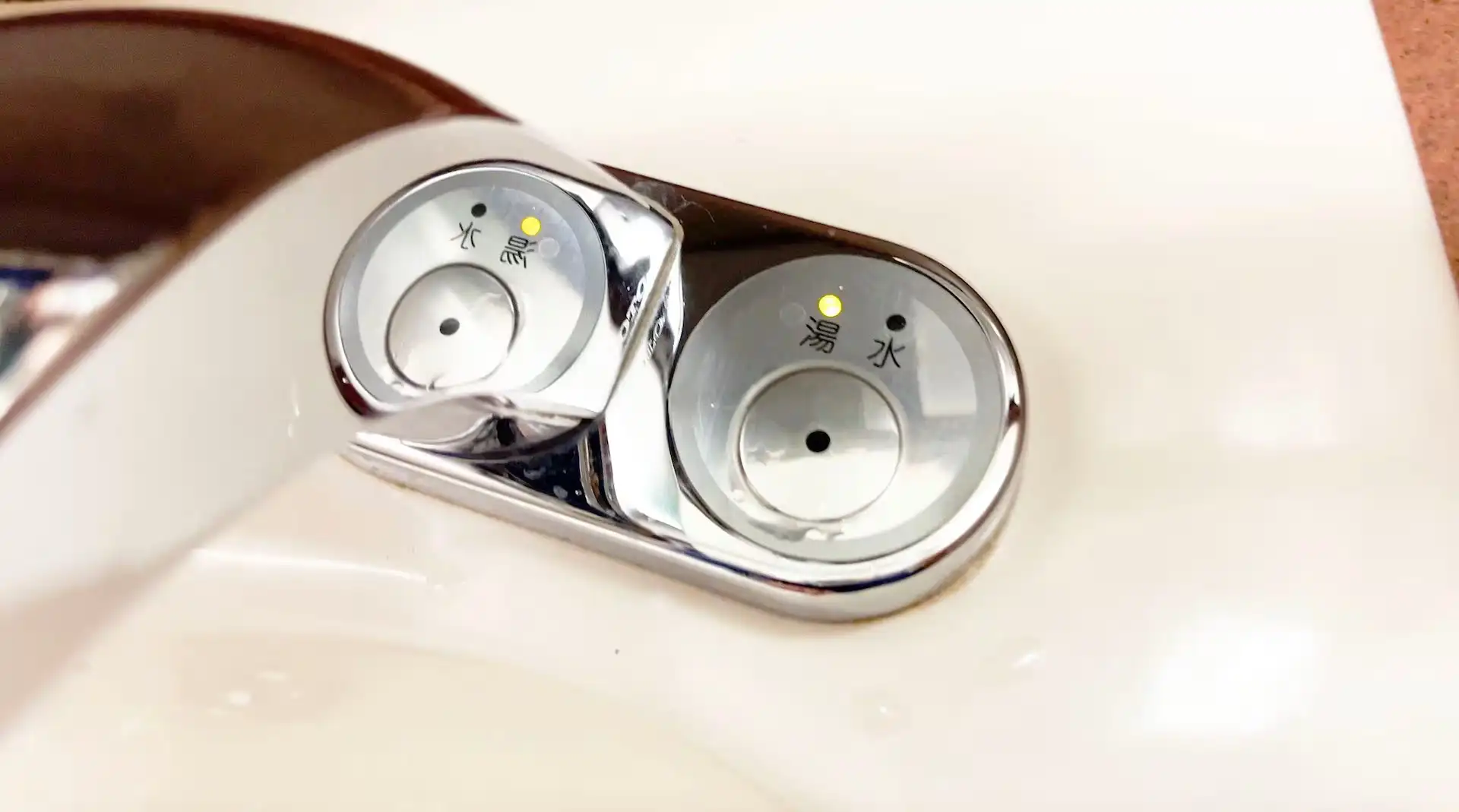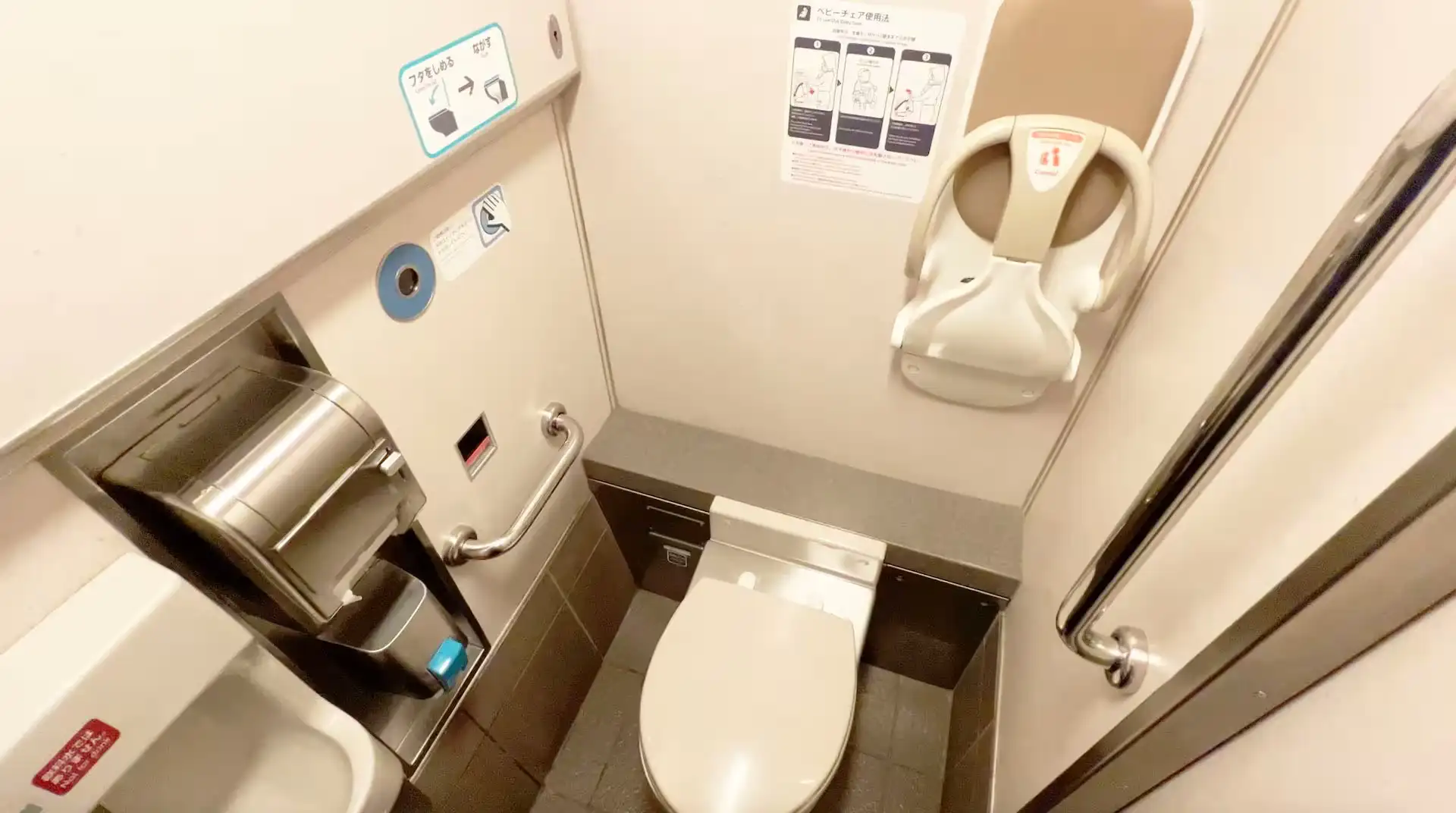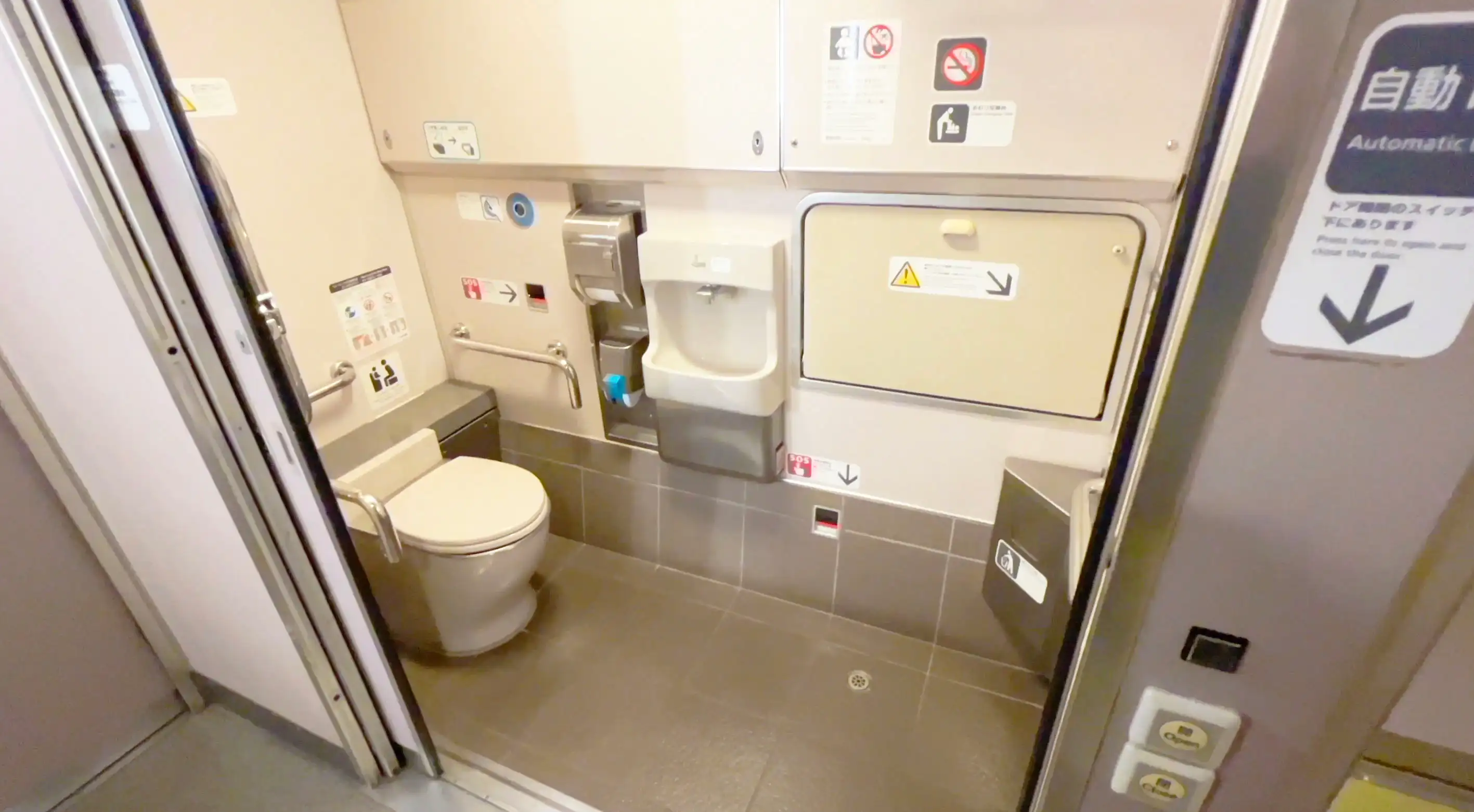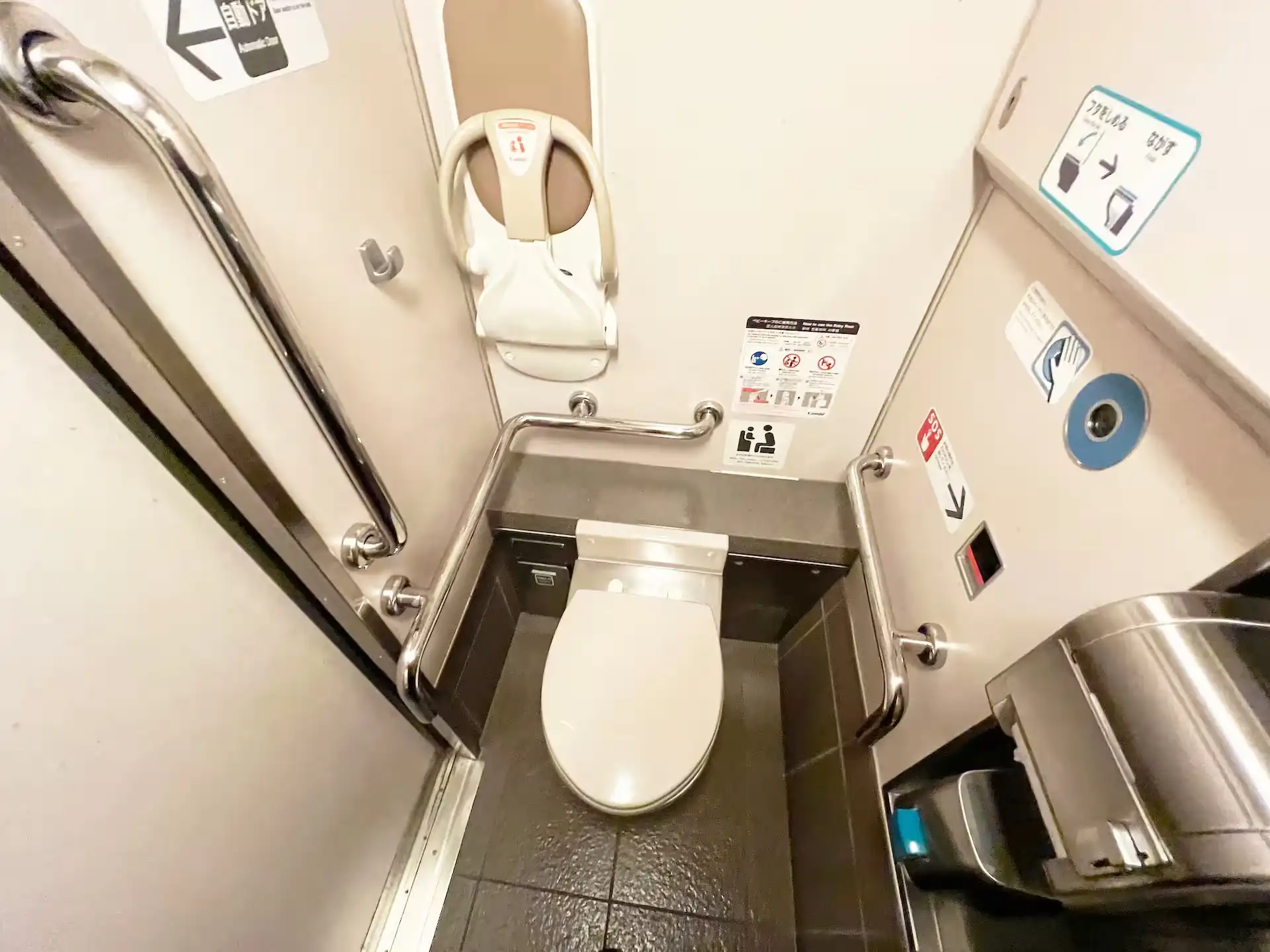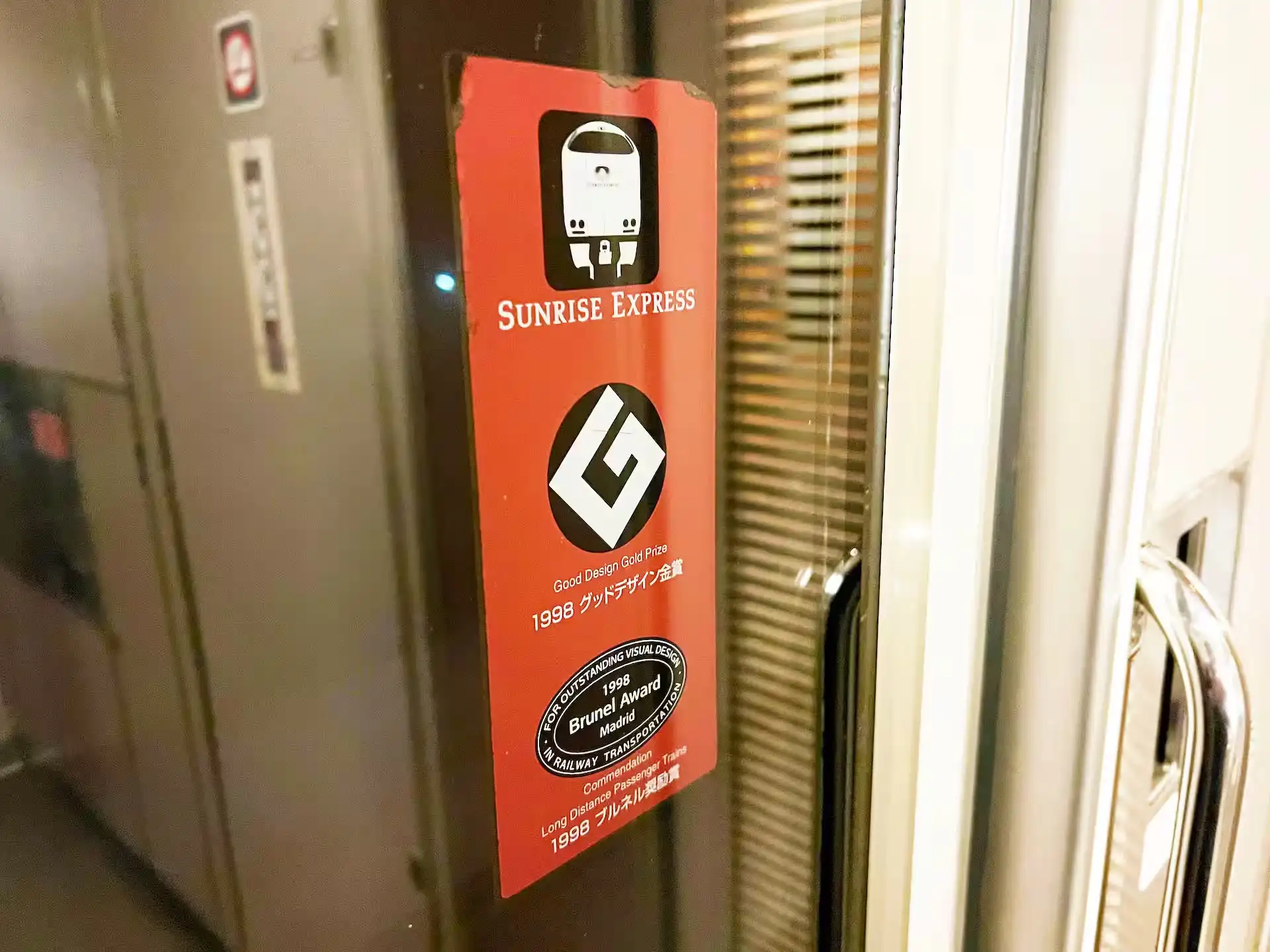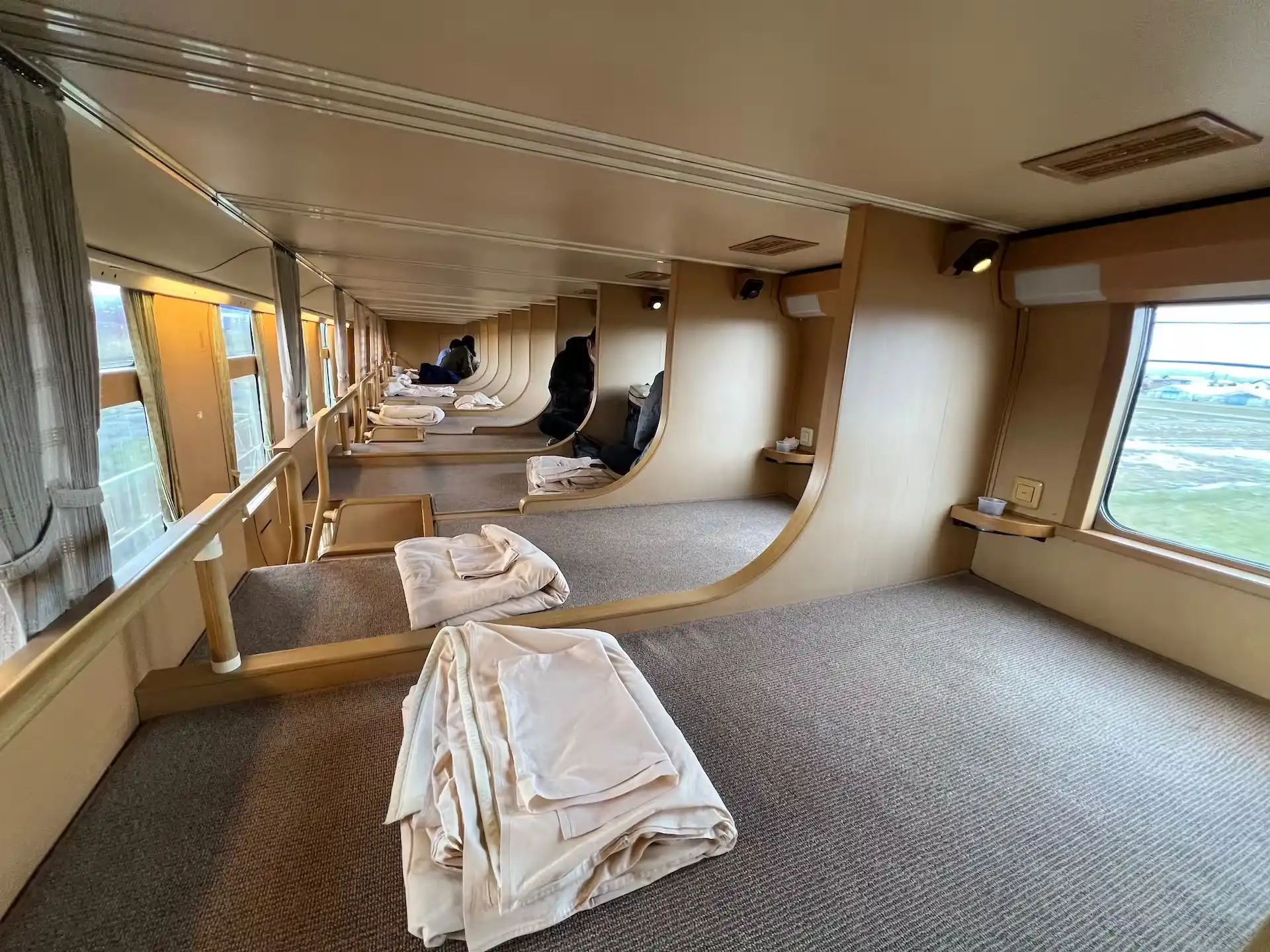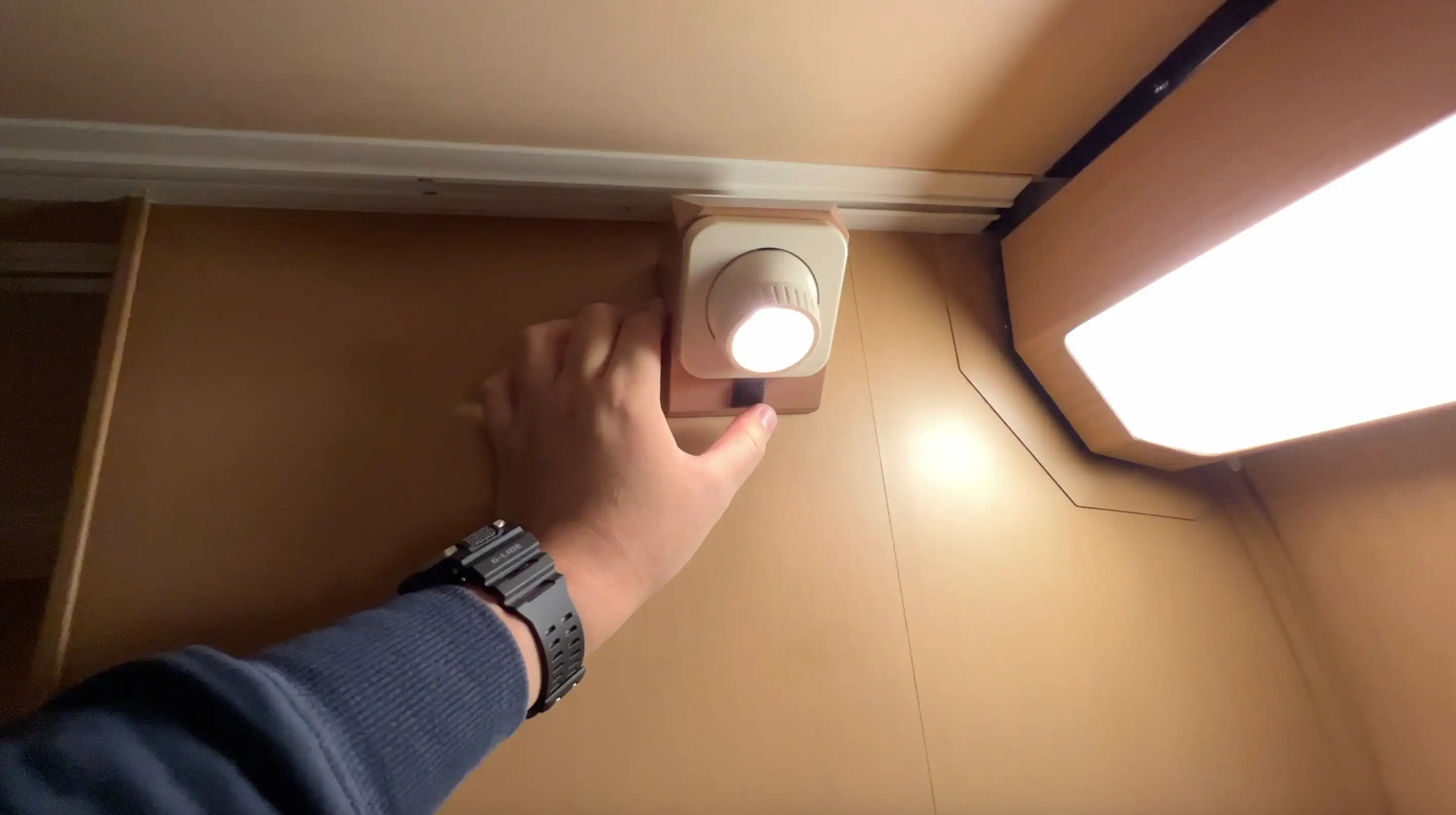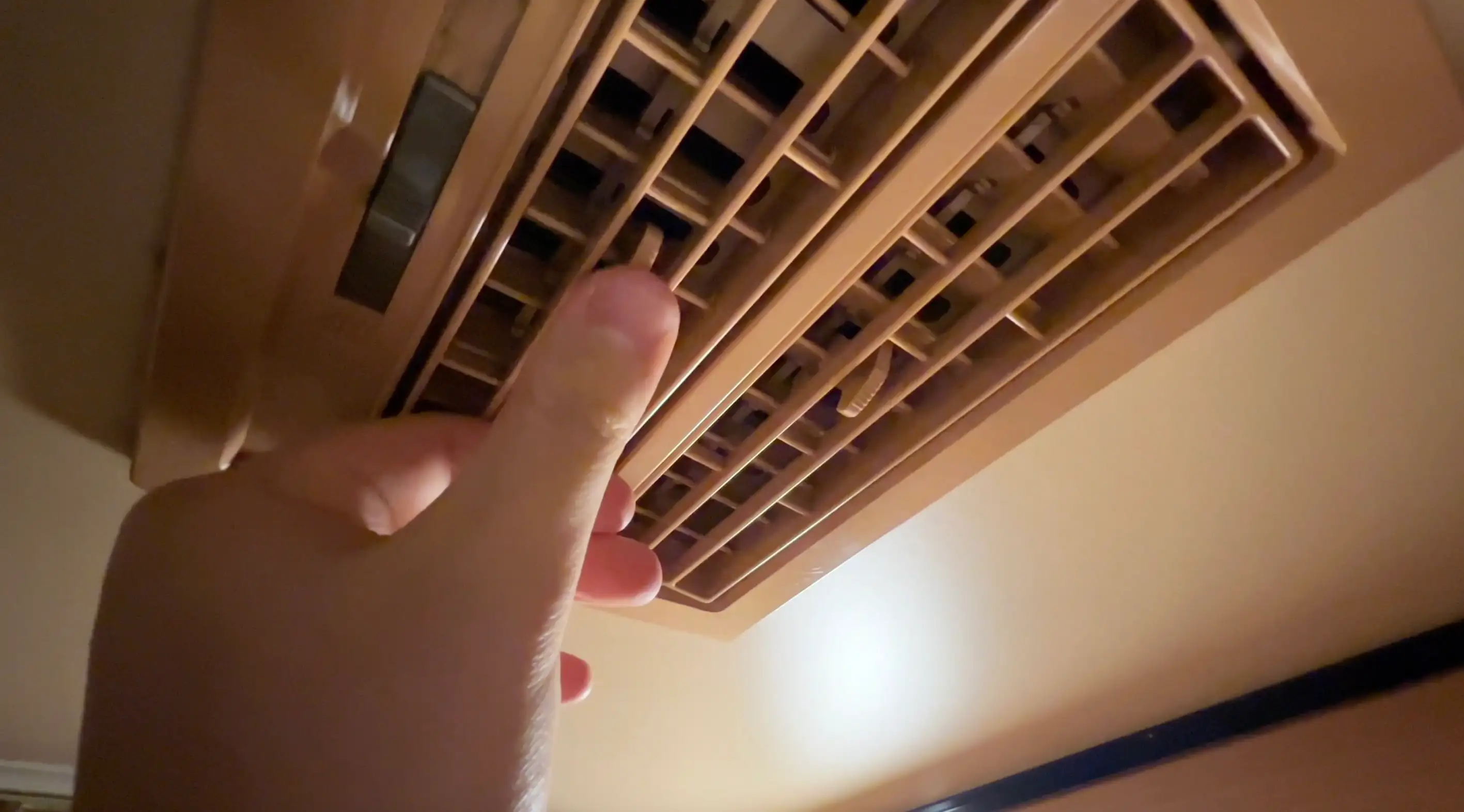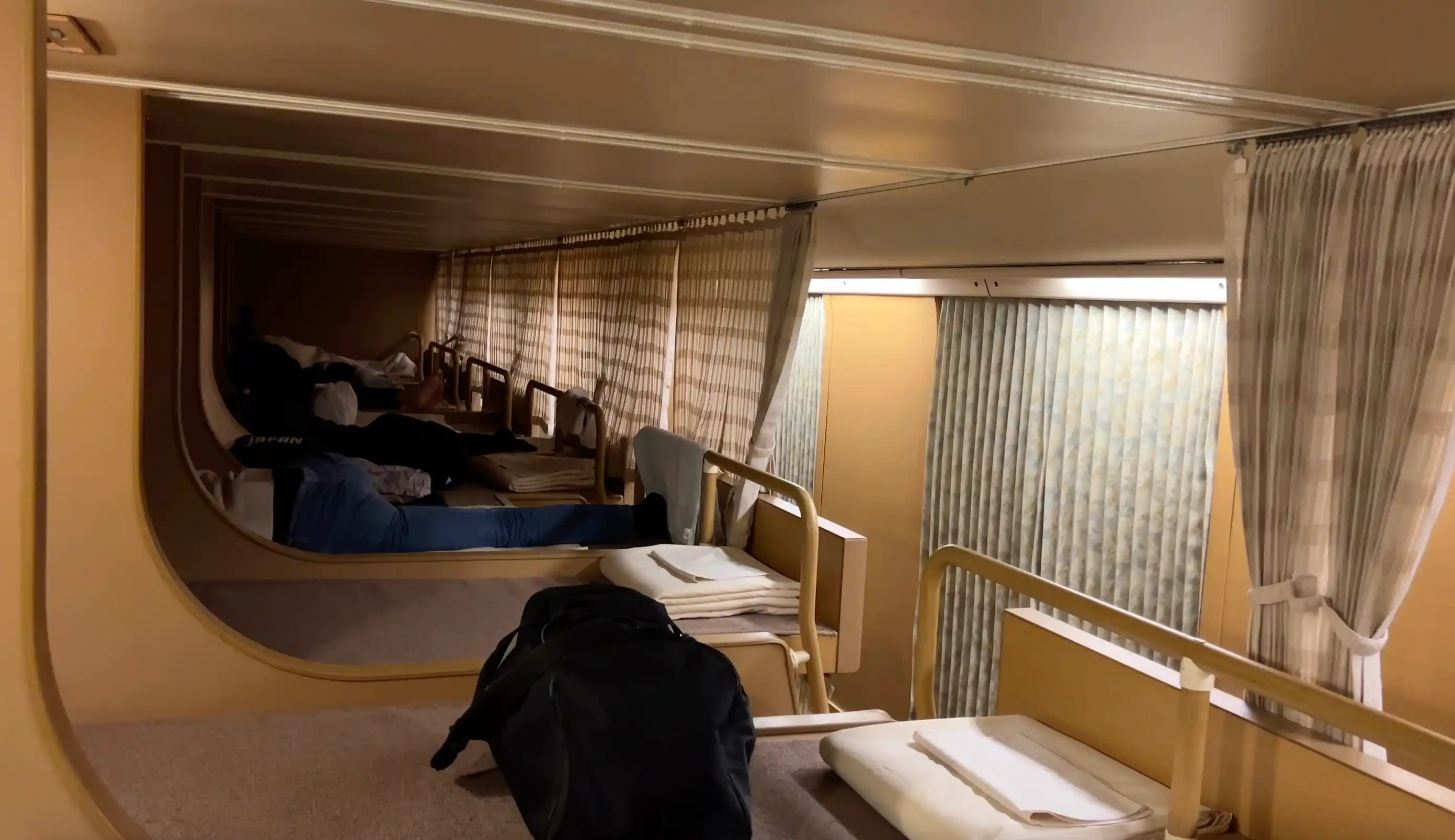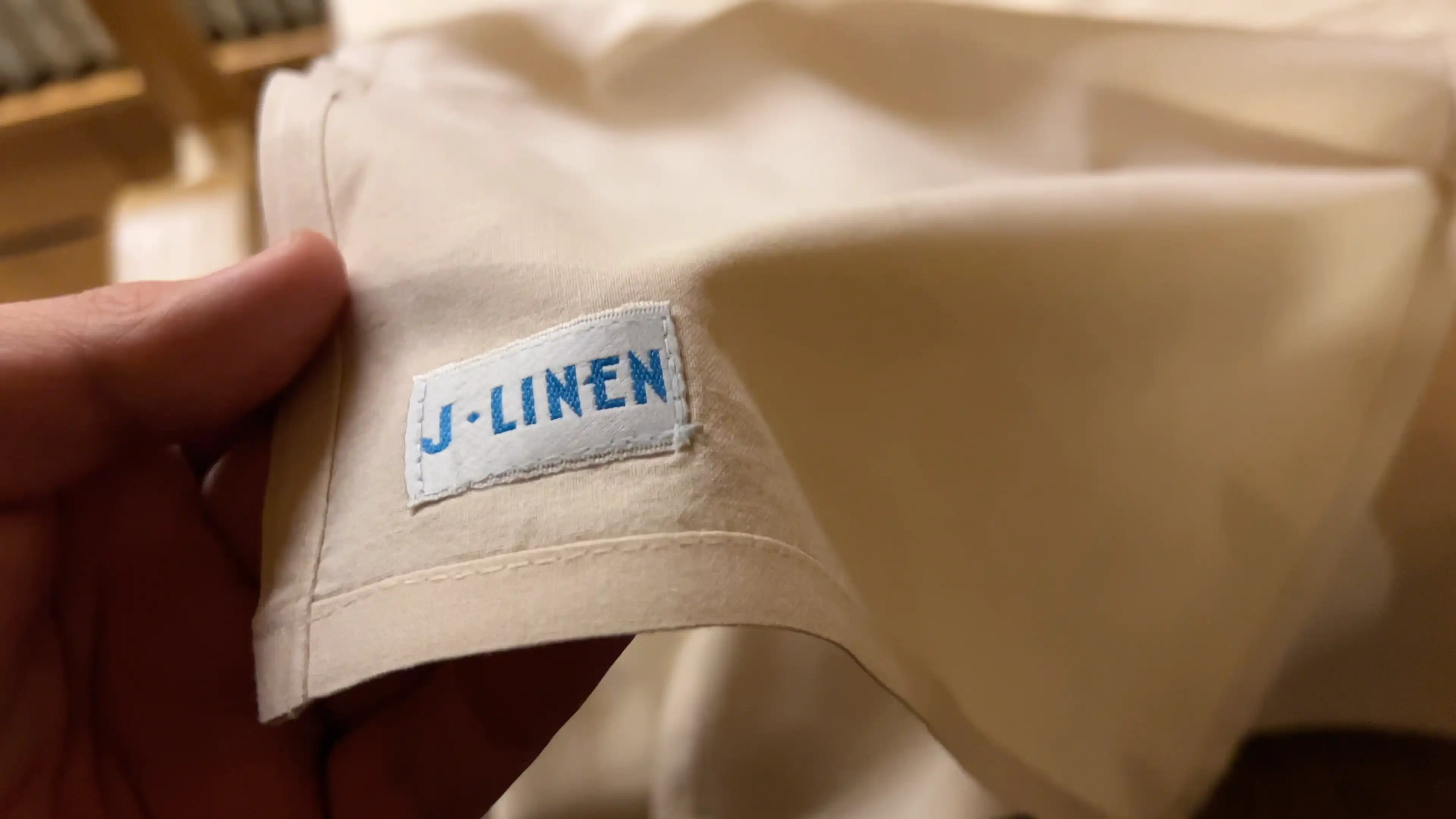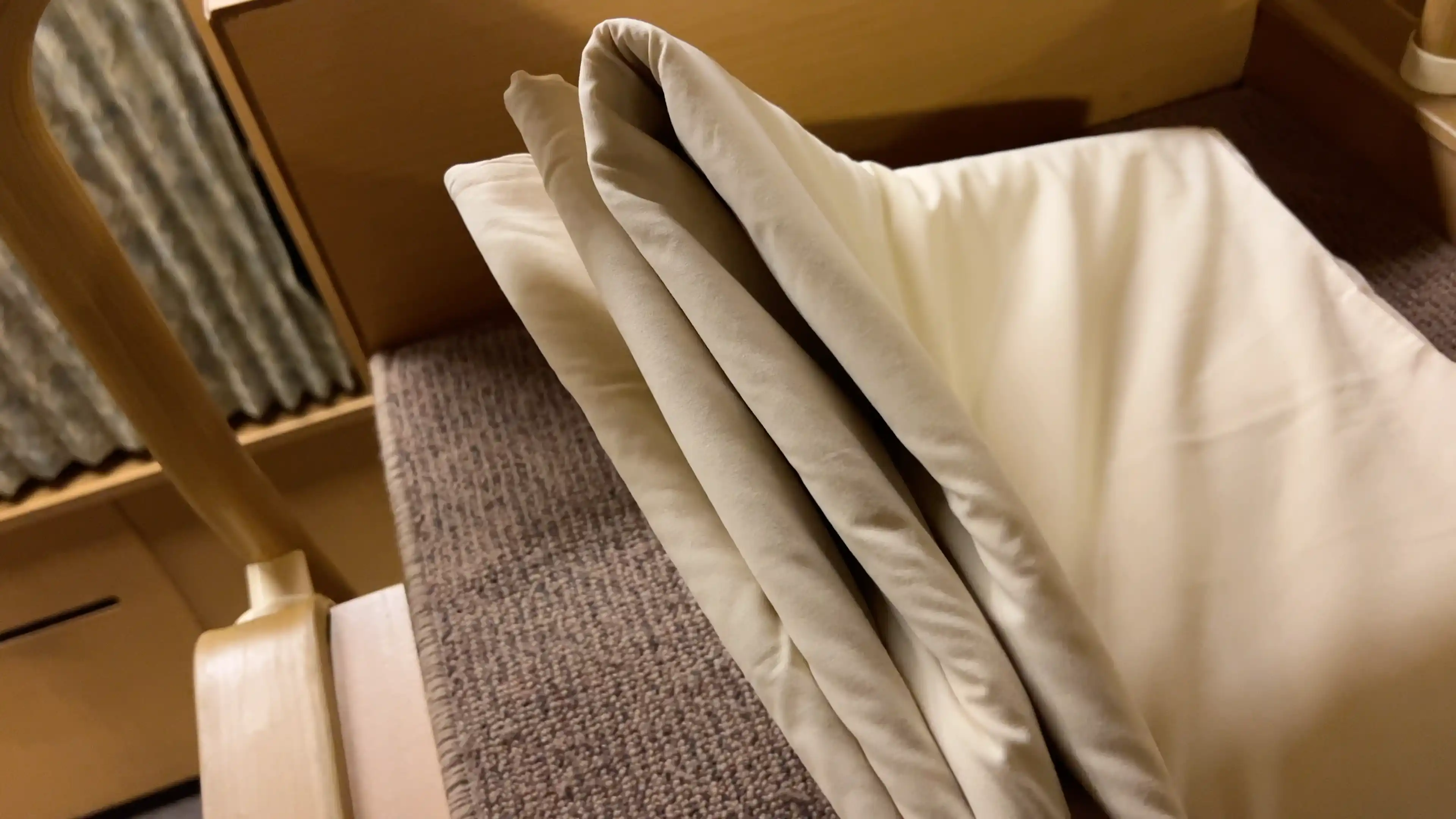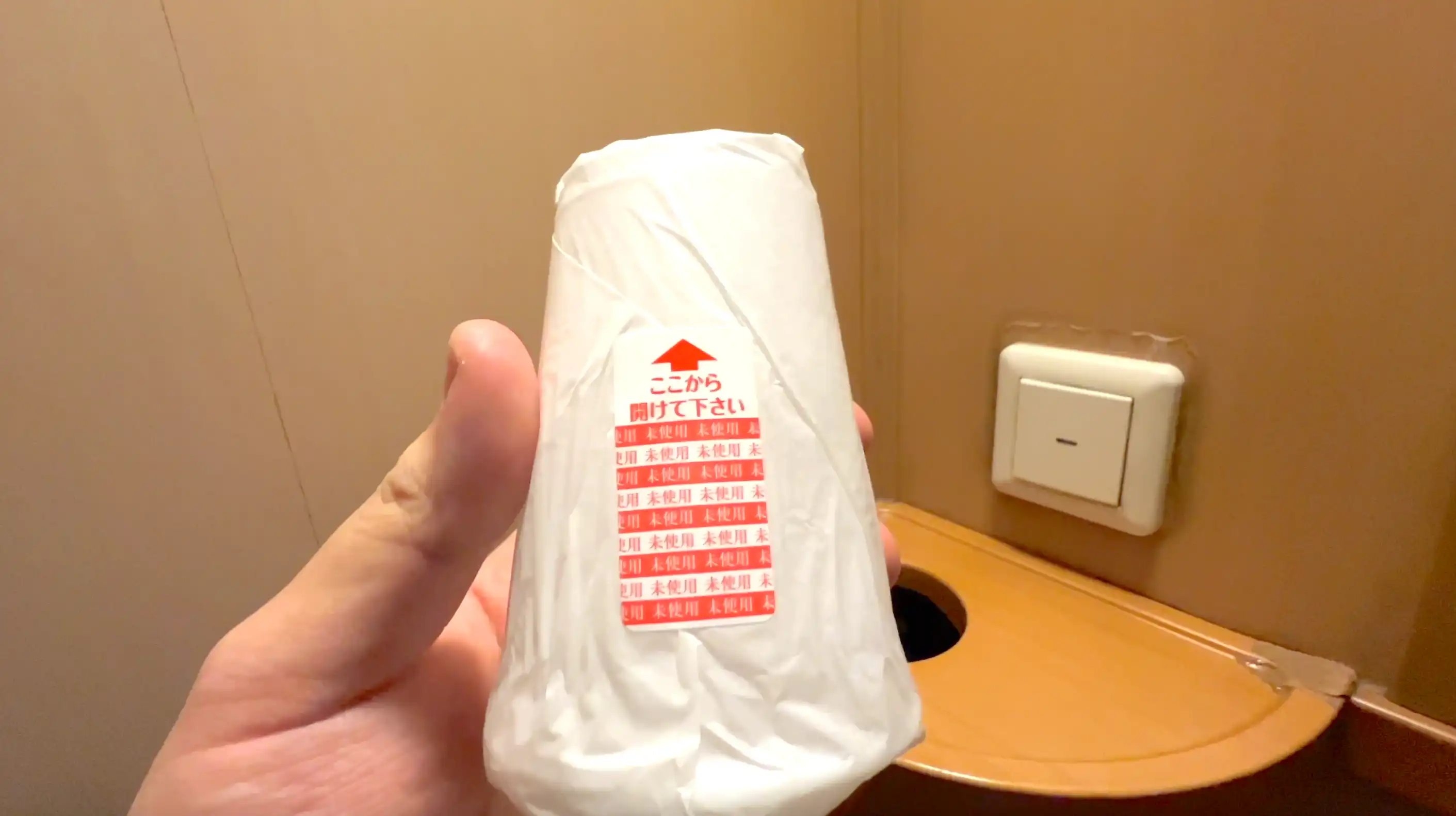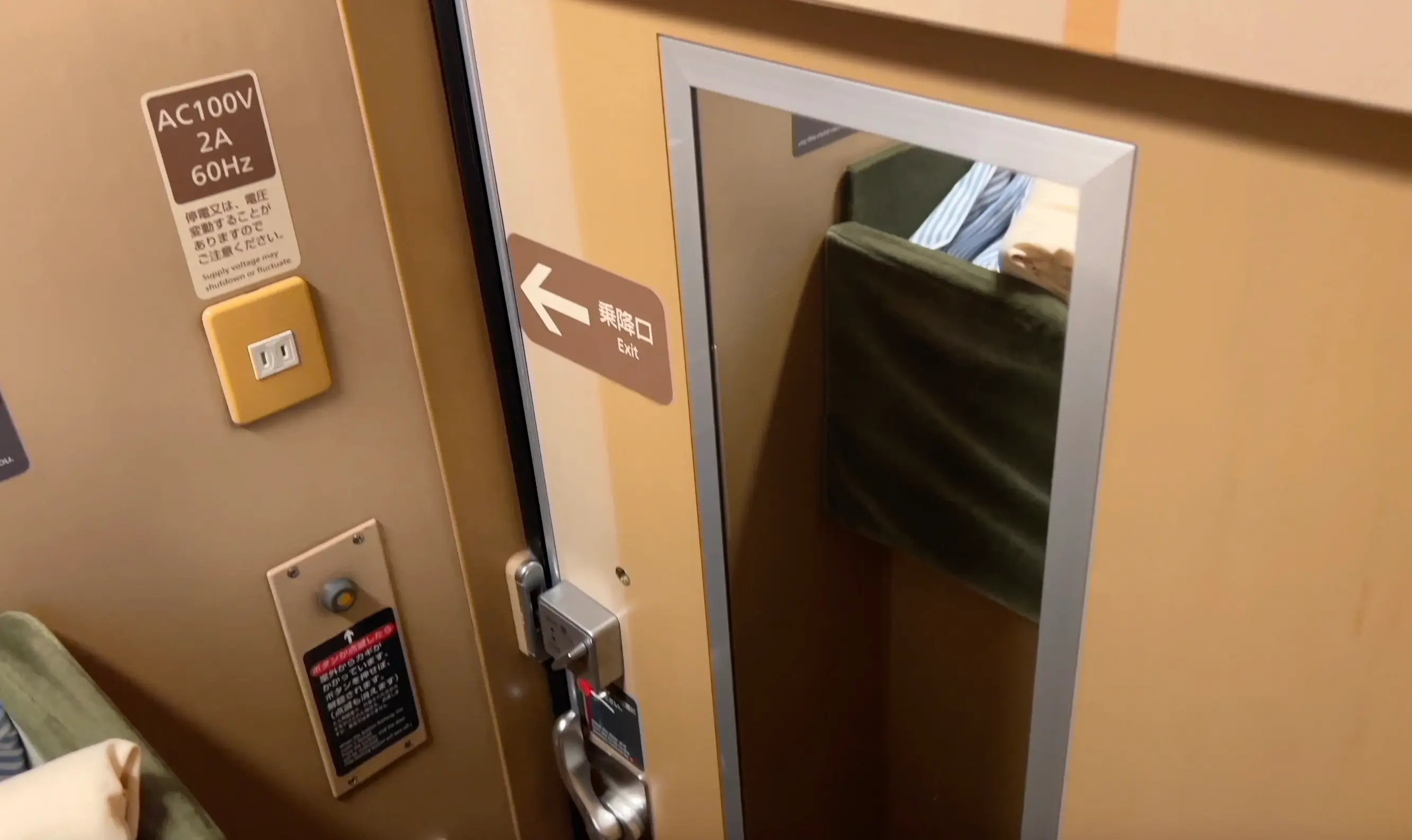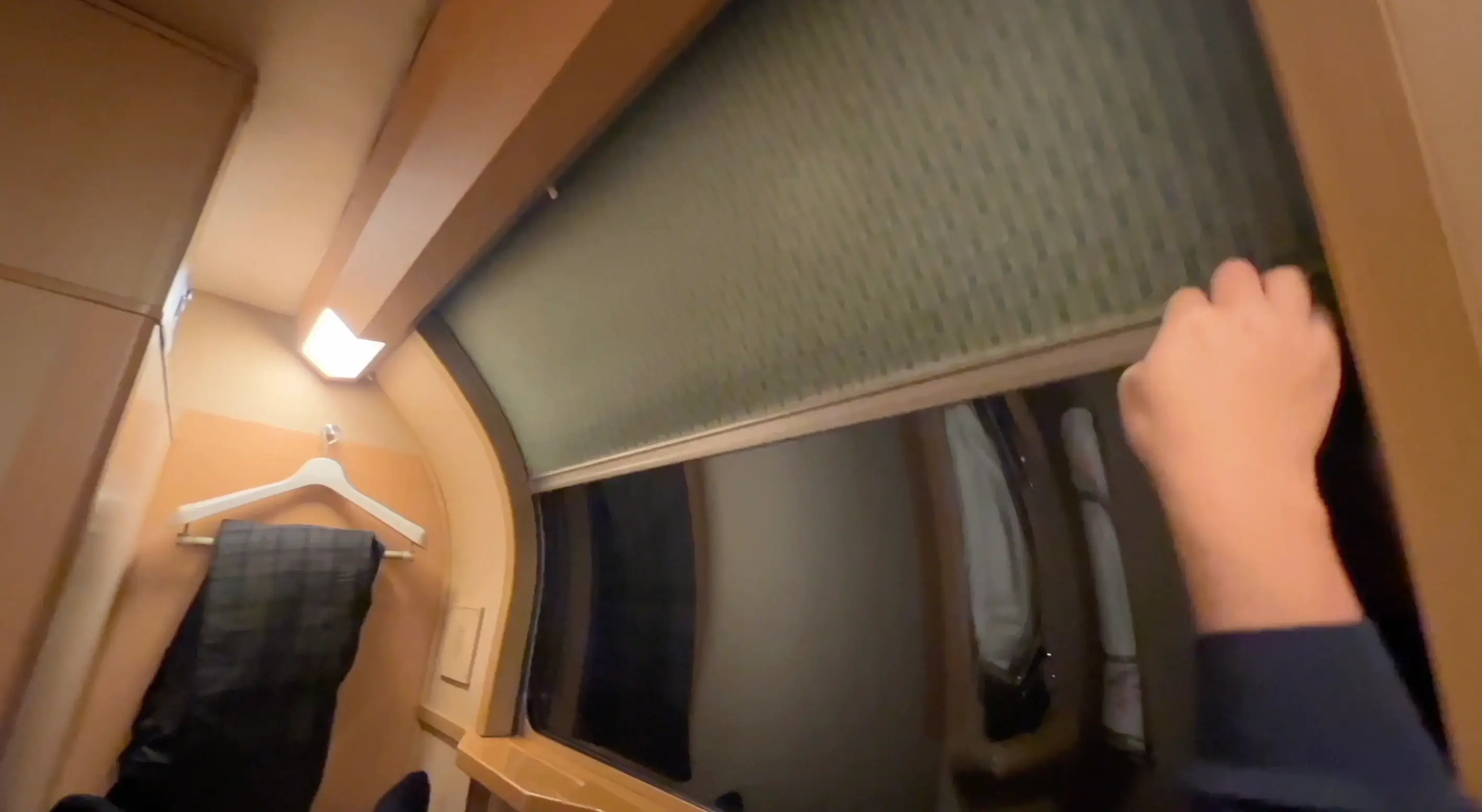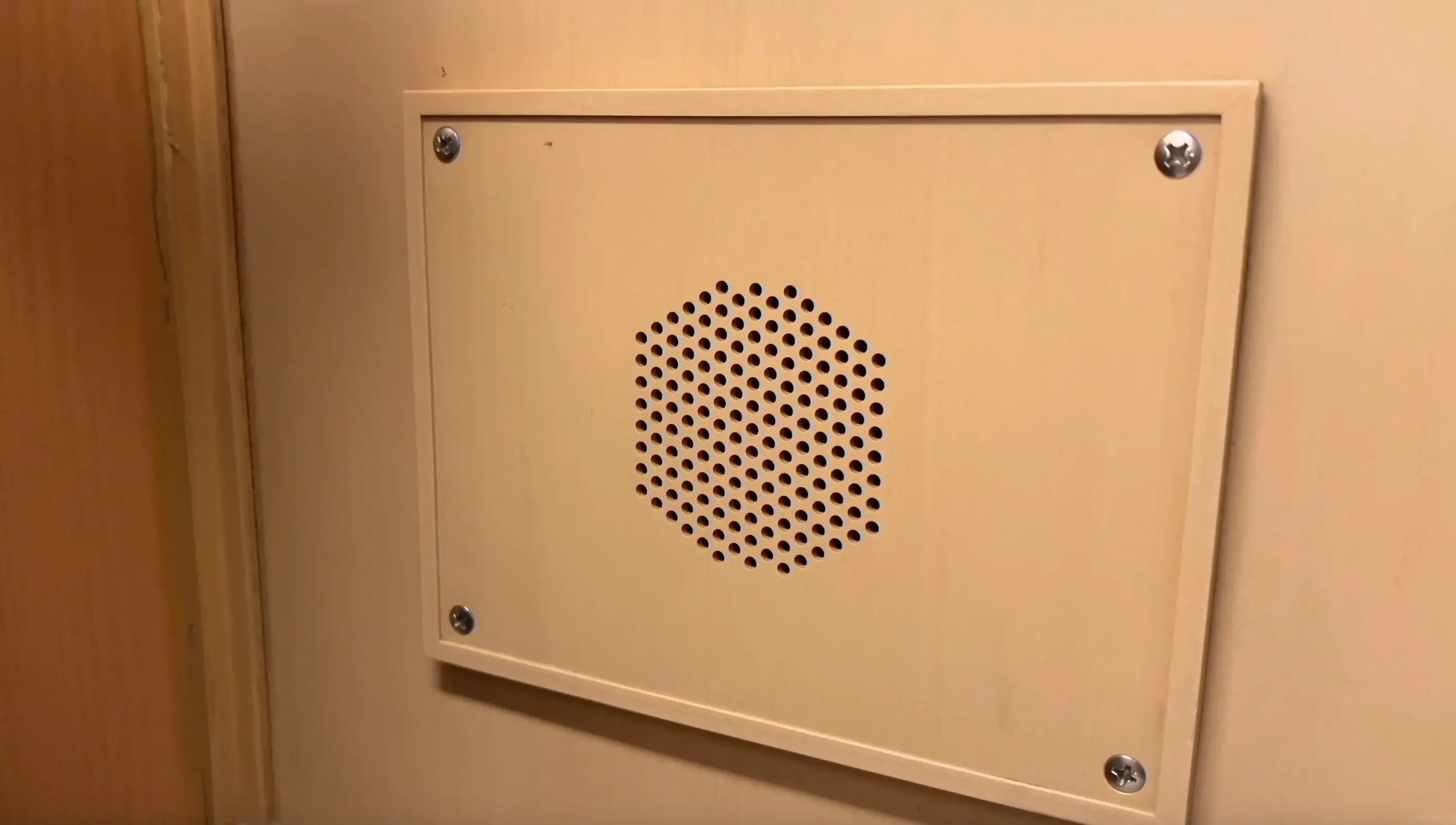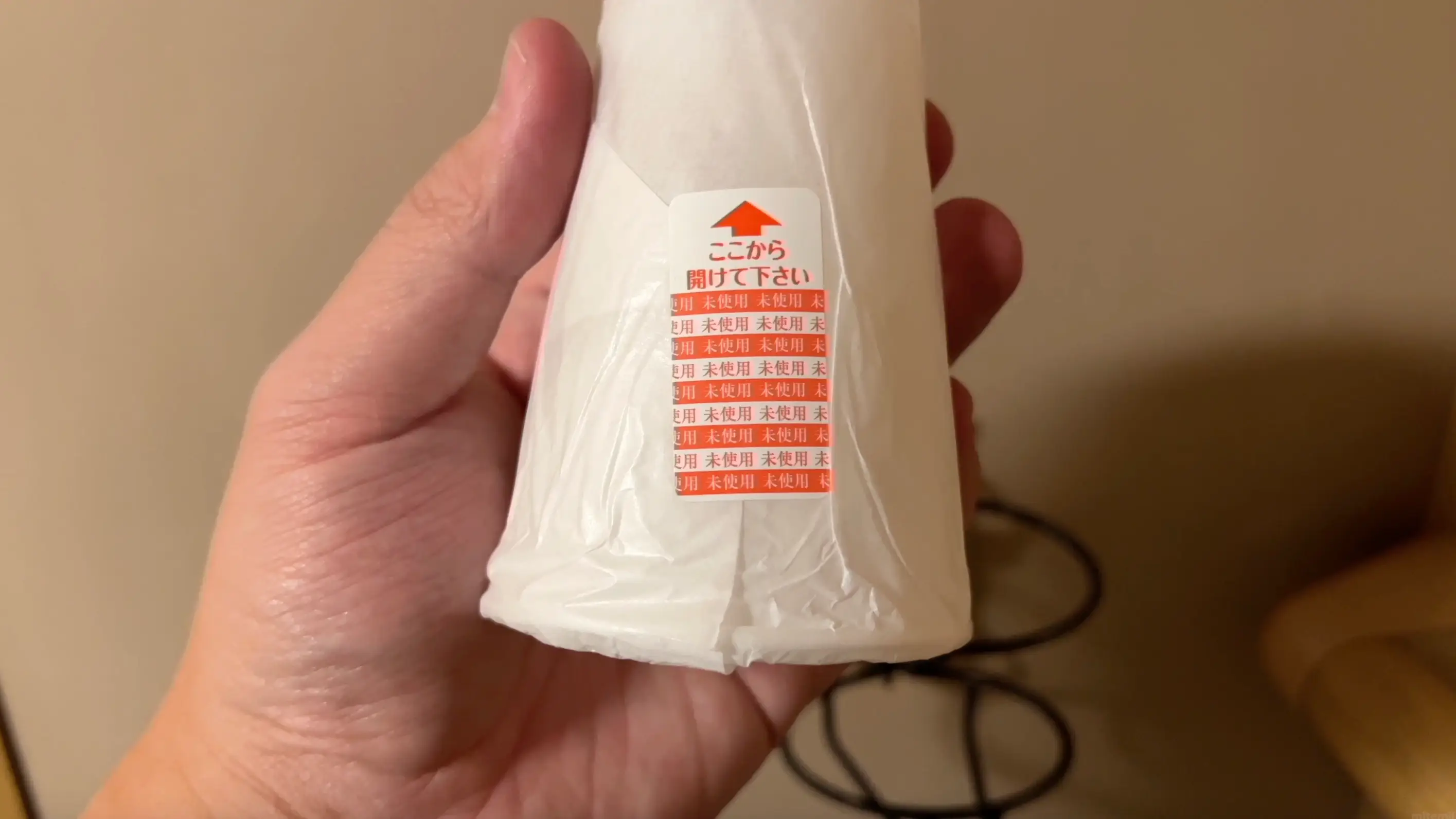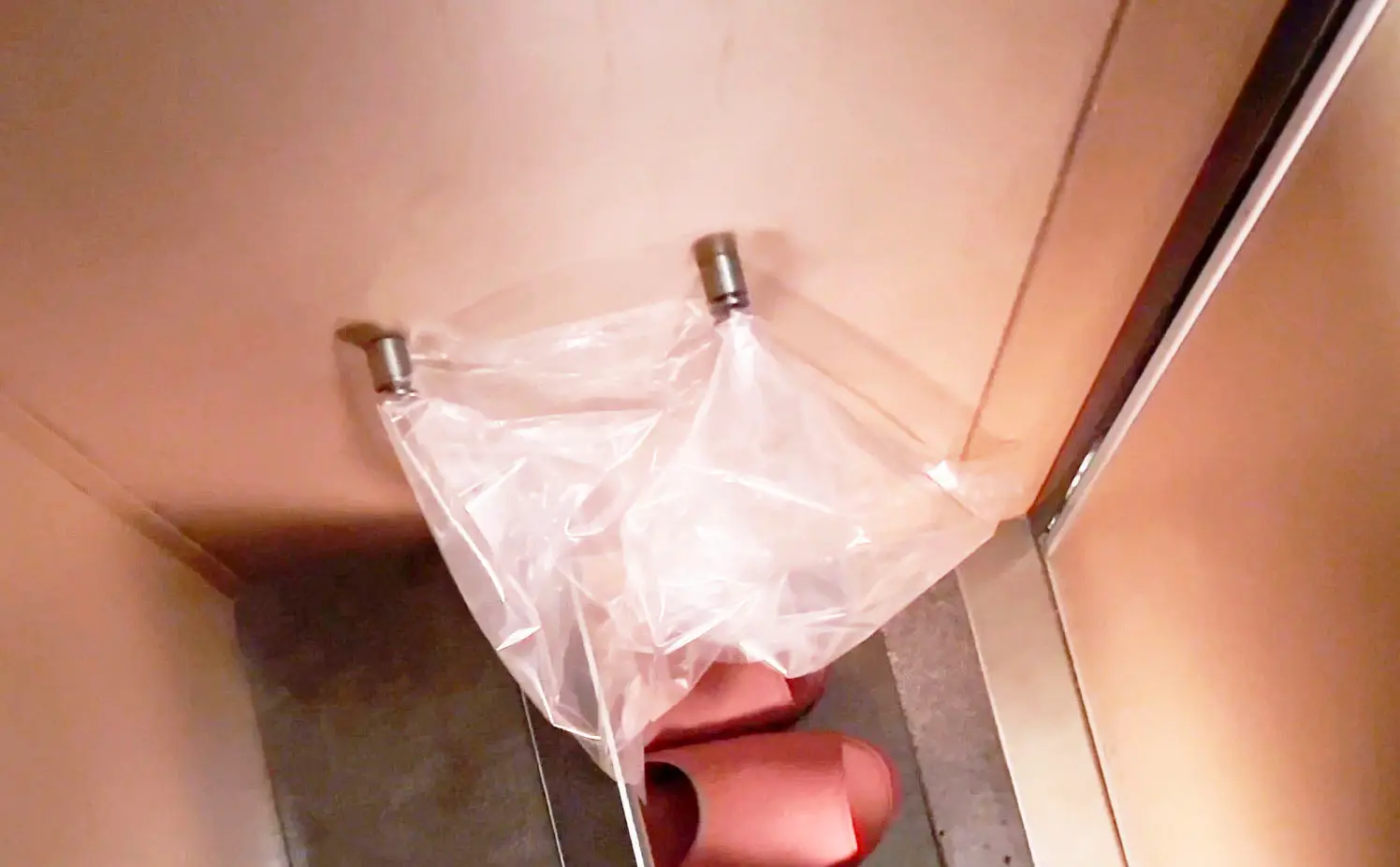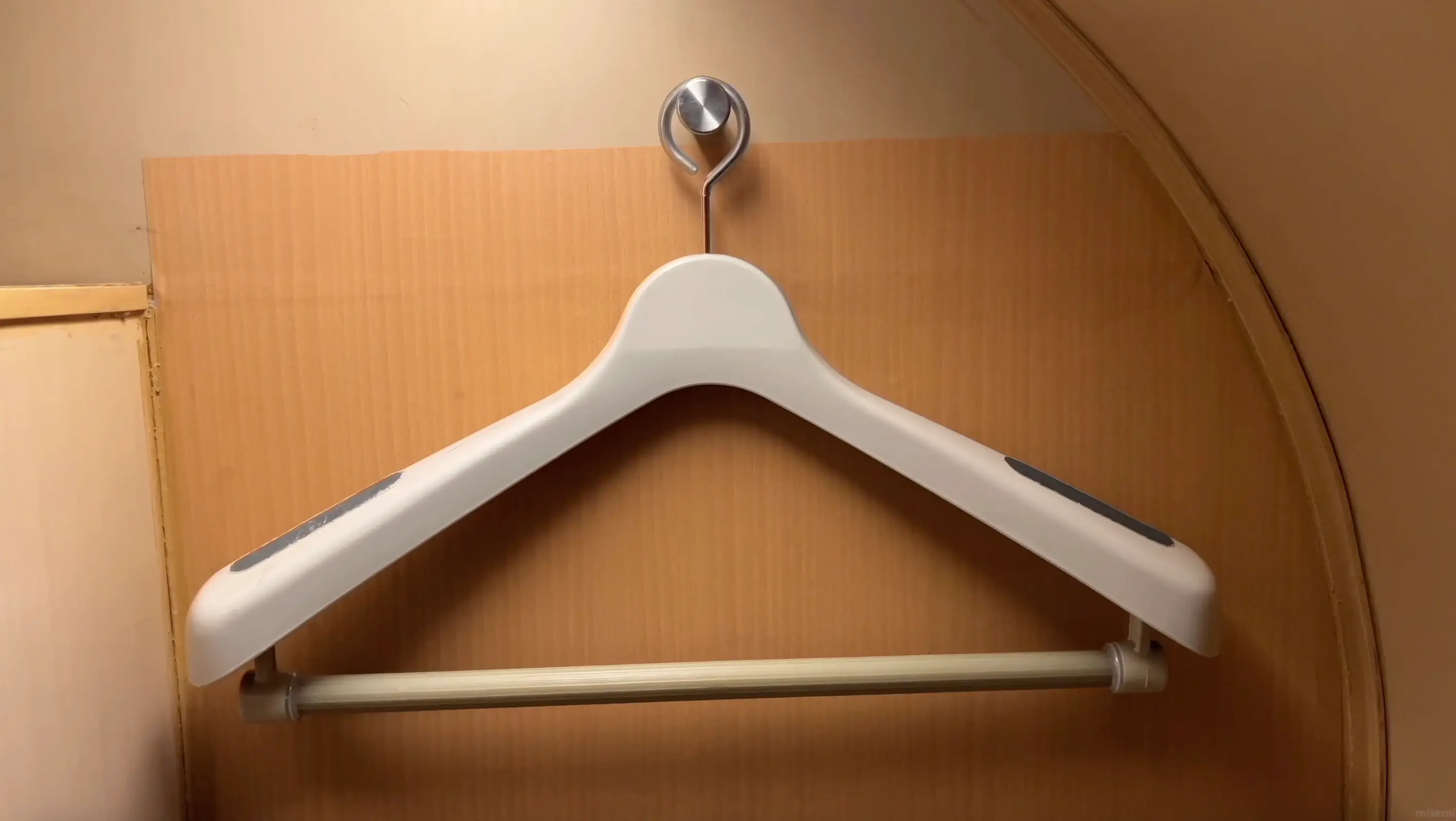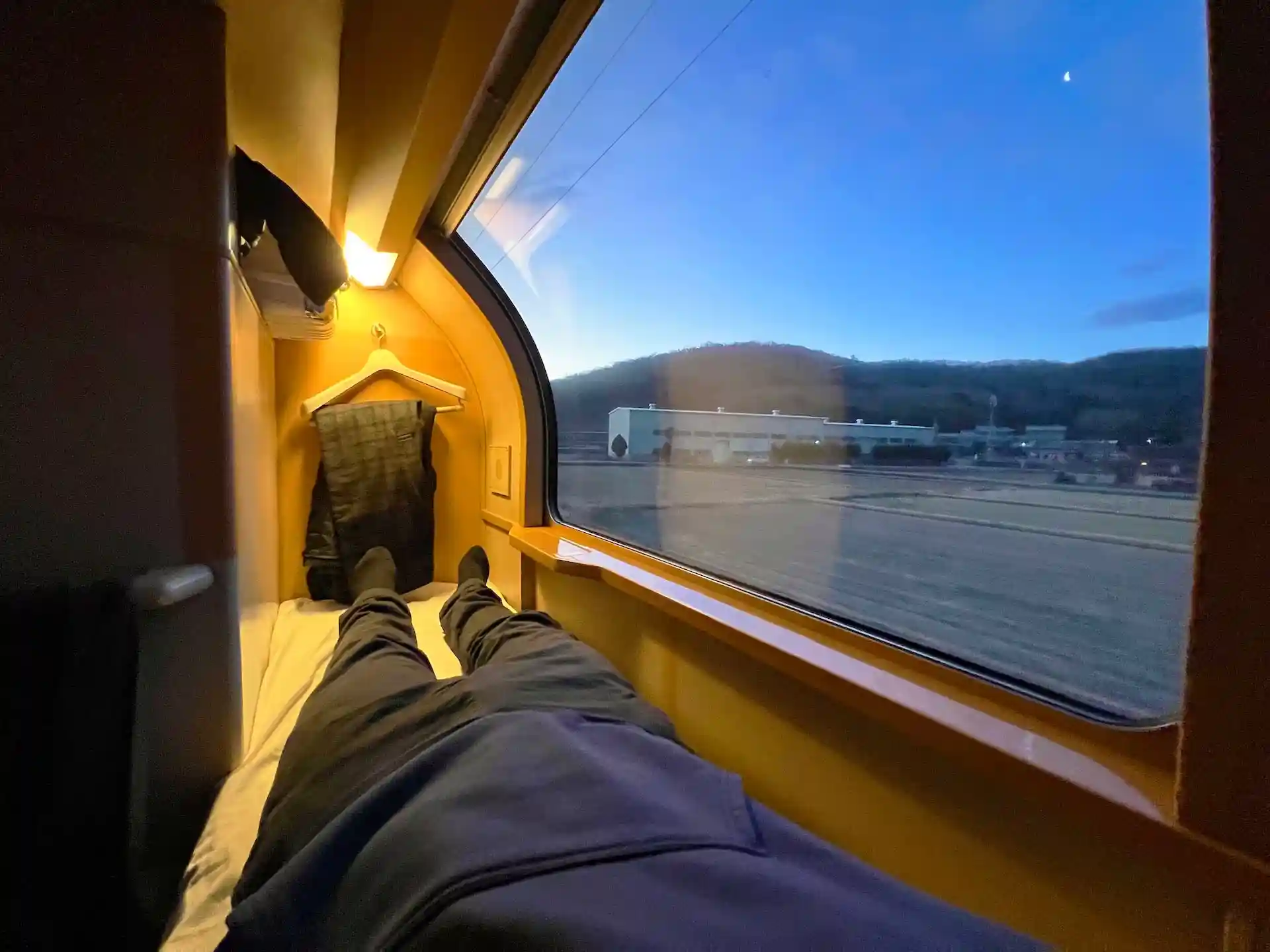
Sunrise Seto & Izumo Ride Report
- Schedule: 21:50 → 10:50 (※50-minute delay)
- Duration: About 13 hours
- Route: Tokyo (Tokyo Station) → Shimane (Izumo City)
- Seat: B Sleeper Solo
- Fare: ¥22,110
8:40 p.m., Tokyo Station in Chiyoda-ku, Tokyo.
Boarding the overnight limited express “Sunrise Izumo,” bound for Izumo City in Shimane Prefecture.
I headed to the ticket office to pick up my reserved boarding ticket.
I went to the ticket office to pick up my reserved tickets.
After getting the tickets, I headed to the bento shop inside the station.
I arrived at the bento shop “Ekiben-ya.”
The showcase was filled with a wide variety of boxed meals.
I bought a “30-ingredient Balanced Bento” (¥1,000) and a bottle of tea (¥140) from a nearby vending machine.
At 9:06 p.m., I arrived at platforms 9 and 10.
Even though there were still 40 minutes before departure, a line had already formed.
Everyone was waiting for the limited shower cards.
At 9:20 p.m., the Sunrise Izumo arrived at Tokyo Station.
An announcement was made to guide passengers to their respective train cars.
Three minutes later, the doors opened simultaneously.
I headed to Car No.10 and bought a shower card (¥330) from the vending machine.
I arrived at my reserved room — the cheapest B Sleeper “Solo” upper berth.
A few minutes later, the conductor came by to stamp my ticket.
At 9:50 p.m., the train departed Tokyo Station on time.
Soon after, an onboard announcement began, explaining the stops and where the train would be separated mid-route.
At 10:50 p.m., I arrived at the shower room.
Inserting the shower card into the machine started a 6-minute timer.
“Buy a shower card,” “Conserve water,” and “Battle the clock.”
Taking a shower on a sleeper train is a challenge.
Also, the dryer had a pretty weak airflow.
I bought a can of cola (¥130) from the vending machine near the shower room.
After relaxing in the mini lounge for a bit, I went to bed around 11:00 p.m.
At 3:28 a.m., I woke up and looked outside to see that the train had stopped at an unscheduled location.
It was a temporary stop at Omi-Nagaoka Station to let a freight train pass.
At 5:15 a.m., the train stopped at Osaka Station for a conductor change.
After a three-minute stop, we departed again.
Shortly after departure, the announcement stated that the train was running about 50 minutes late due to an earlier incident — a freight train ahead had struck a small animal.
Around 6:20 a.m., the sky began to brighten.
We were approaching Okayama Station — time for the train’s famous morning ritual.
At 7:15 a.m., we arrived at Okayama Station.
Here, the Sunrise Seto and Sunrise Izumo trains are separated.
The Sunrise Seto continues to Takamatsu in Kagawa Prefecture,
while the Sunrise Izumo proceeds toward Izumo City in Shimane Prefecture.
Between Bitchu-Takahashi and Niimi Stations, I moved to the mini lounge
and had breakfast — the bento I bought the night before.
After passing Niimi Station, the scenery suddenly turned white.
Enjoying the snowy view, I took a short nap.
A few minutes before arriving at Yonago Station, a sightseeing announcement was made by the conductor.
The topics vary, and this time it was about Sakaiminato City next to Yonago —
the hometown of Shigeru Mizuki, creator of *GeGeGe no Kitaro*.
The city is famous for its “Mizuki Shigeru Road,” lined with yokai statues.
At 10:50 a.m., we arrived at Izumo City Station — exactly 50 minutes behind schedule.
Despite the delay, it was a wonderful journey and a memorable experience.
Thank you very much for reading!
Sunrise Seto & Izumo Train Details
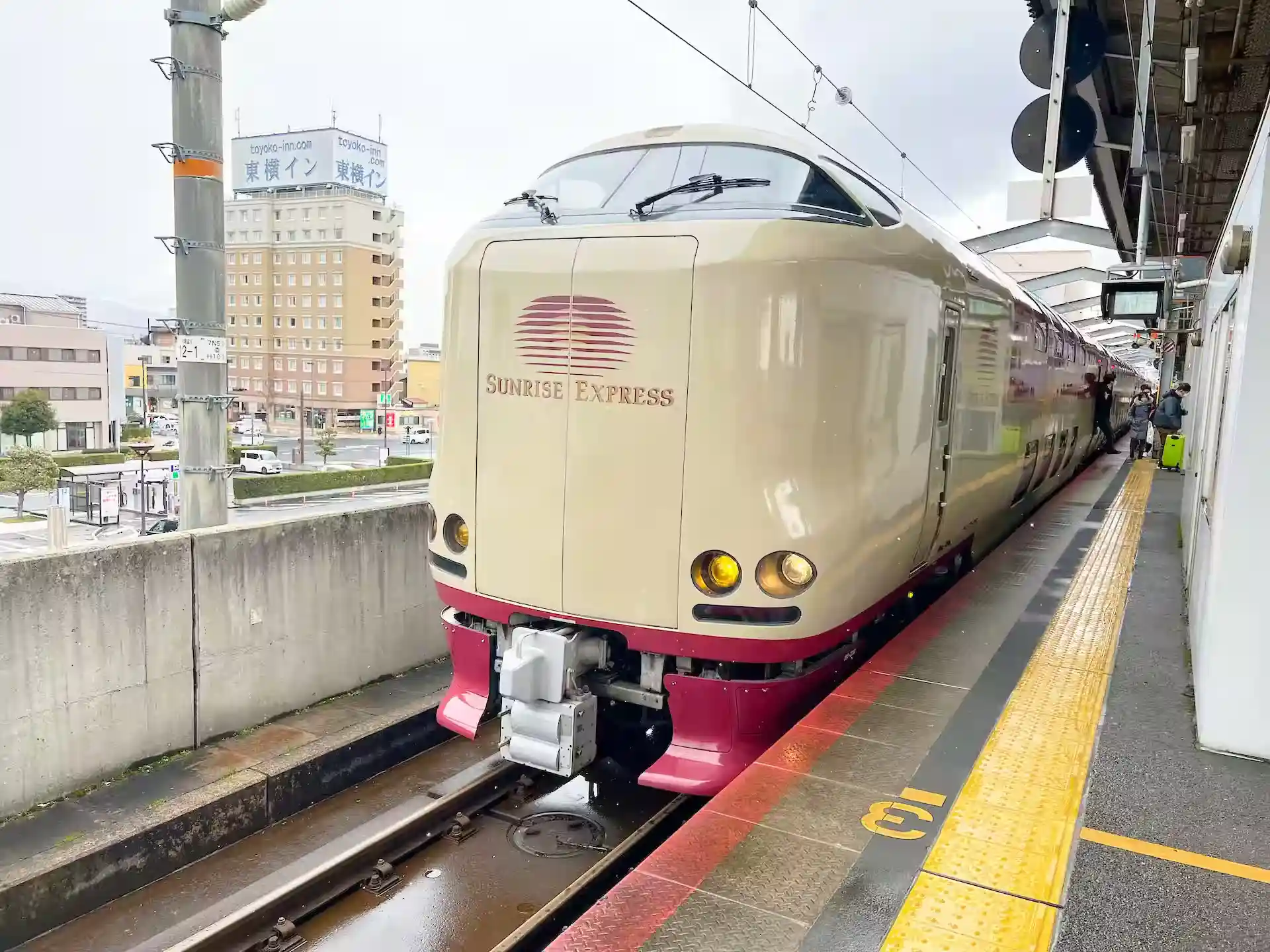
- Name – JR West Series 285 EMU
- In Service – July 10, 1998
- Total Length – Approx. 21.67 meters (per car)
- Gross Weight – Approx. 43.57 tons (per car)
- Maximum Speed – 130 km/h
- Passenger Capacity – 158 people
Sunrise Seto & Izumo – Train Interior Map
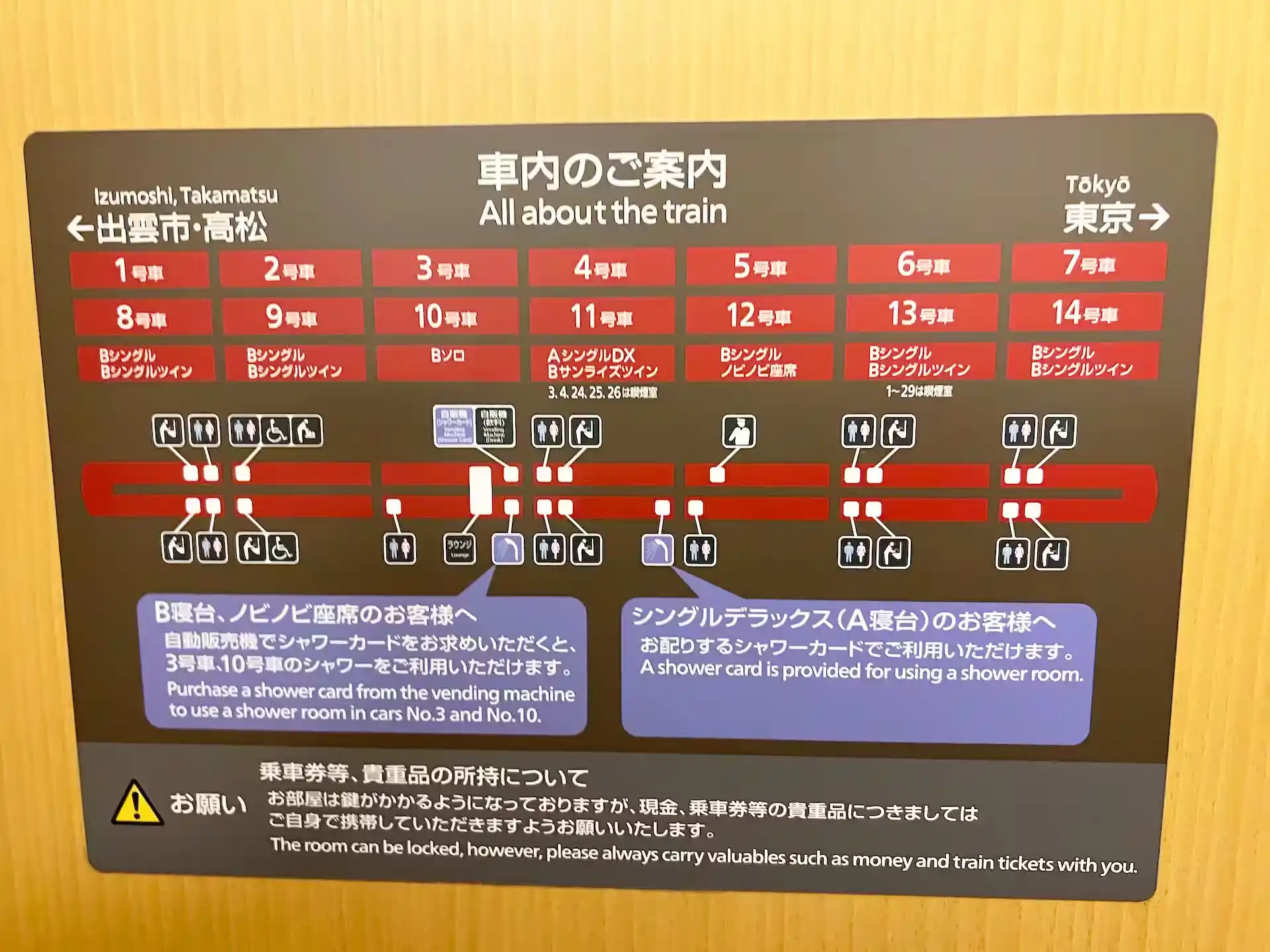
Sunrise Seto & Izumo Onboard Tour
Deck (Entrance/Exit)
Mini Lounge
Shower Room
Vending Machine
Wash Basin
Toilets & Multipurpose Toilet
Door Stickers
Sunrise Seto & Izumo Routes & Travel Time
Sunrise Seto (Tokyo – Takamatsu)
| Departure | Arrival | Travel Time |
| Tokyo Station 21:50 | Takamatsu Station 07:27 | Approx. 9h 37min |
| Takamatsu Station 21:26 | Tokyo Station 07:08 | Approx. 9h 18min |
Sunrise Izumo (Tokyo – Izumo-shi)
| Departure | Arrival | Travel Time |
| Tokyo Station 21:50 | Izumo-shi Station 10:00 | Approx. 12h 10min |
| Izumo-shi Station 18:57 | Tokyo Station 07:08 | Approx. 12h 11min |
Sunrise Seto & Izumo (Osaka → Tokyo)
| Departure | Arrival | Travel Time |
| Osaka Station 0:33 | Tokyo Station 07:08 | Approx. 6h 35min |
| Tokyo Station | Osaka Station | No service |
Access to Major Stations for Sunrise Seto / Izumo (Tokyo, Osaka, Izumoshi, Takamatsu)
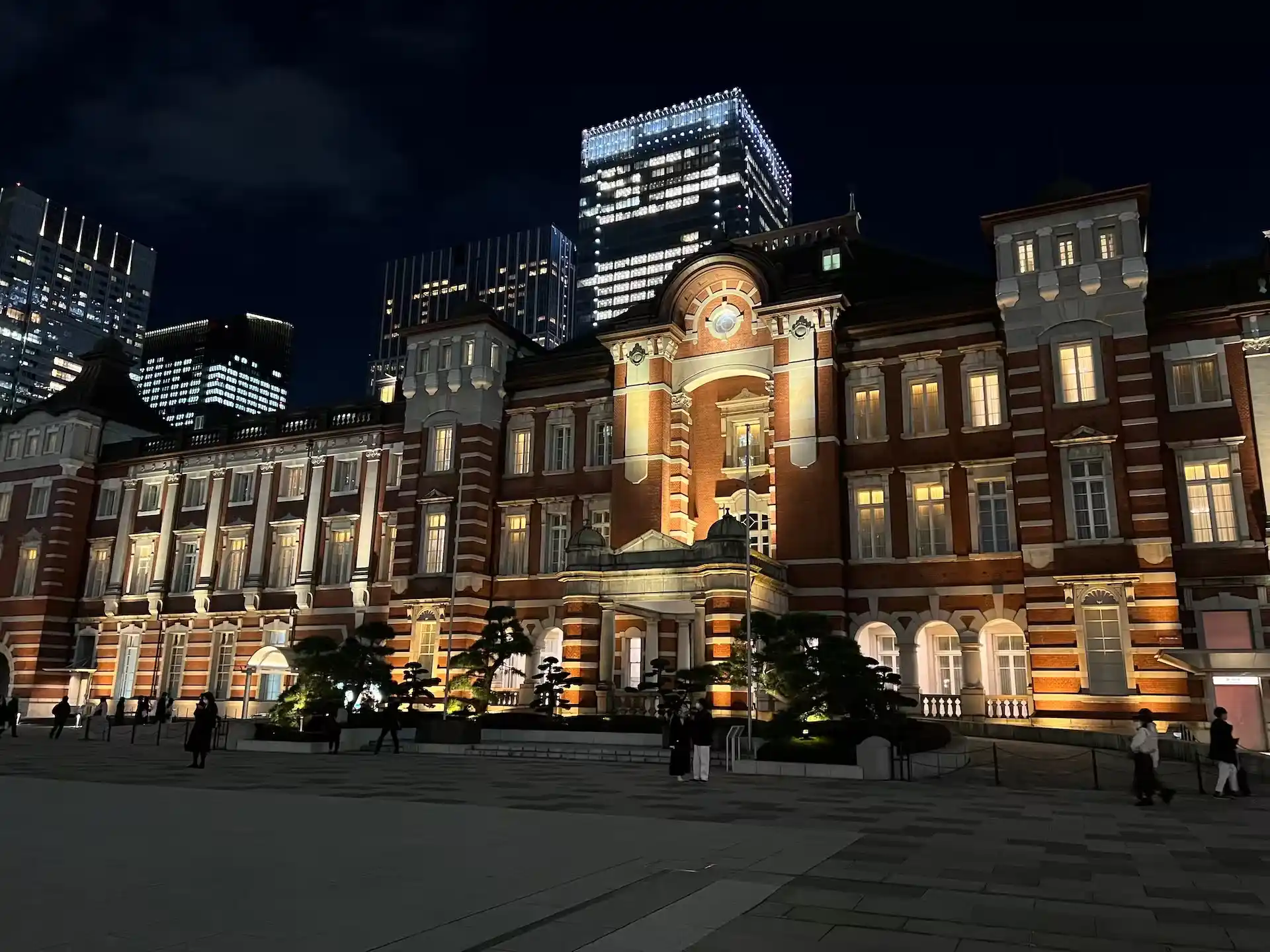
■ From Haneda Airport (Train: approx. 23 min / 690 yen)
| Departure | Arrival | Time / Fare | |
| Train | Haneda Airport Terminal 3 Station | Tokyo Station | Approx. 23 min / 690 yen |
■ From Haneda Airport (Bus: approx. 42 min / 1,200 yen)
| Departure | Arrival | Time / Fare | |
| Bus | Haneda Airport Terminal 1 (Bus Stop) | Tokyo Station Yaesu North Exit (Bus Stop) | Approx. 42 min / 1,200 yen |
| Walk | Tokyo Station Yaesu North Exit | Tokyo Station | Approx. 3 min |
■ From Narita Airport (Train: approx. 56 min / 2,750 yen)
| Departure | Arrival | Time / Fare | |
| Train | Airport Terminal 2 Station | Tokyo Station | Approx. 56 min / 2,750 yen |
■ From Narita Airport (Bus: approx. 1 hr 9 min / 1,500 yen)
| Departure | Arrival | Time / Fare | |
| Bus | Narita Airport Terminal 1 (Bus Stop) | Tokyo Station Nihonbashi Exit (Bus Stop) | Approx. 1 hr 9 min / 1,500 yen |
| Walk | Tokyo Station Nihonbashi Exit | Tokyo Station | Approx. 2 min |
■ From Kansai International Airport
Pattern 1 (Bus): approx. 1 hr 5 min / 1,800 yen
Pattern 2 (Train): approx. 1 hr 4 min / 1,170 yen
■ From Osaka (Itami) Airport
Pattern 1 (Monorail + Train): approx. 34 min / 440 yen
Pattern 2 (Bus): approx. 27 min / 730 yen
■ From Izumo Airport (Bus: approx. 30 min / 850 yen)
| Departure | Arrival | Time / Fare | |
| Bus | Izumo Airport (Bus Stop) | Izumoshi Station (Bus Stop) | Approx. 30 min / 850 yen |
■ From Takamatsu Airport (Bus: approx. 51 min / 1,000 yen)
| Departure | Arrival | Time / Fare | |
| Bus | Takamatsu Airport (Bus Stop) | Takamatsu-Chikko (Bus Stop) | Approx. 51 min / 1,000 yen |
| Walk | Takamatsu-Chikko | Takamatsu Station | Approx. 5 min |
■ From Takamatsu Port (Walk: approx. 7 min)
| Departure | Arrival | Time / Fare | |
| Walk | Takamatsu Port | Takamatsu Station | Approx. 7 min |
Sunrise Seto & Izumo – Timetable
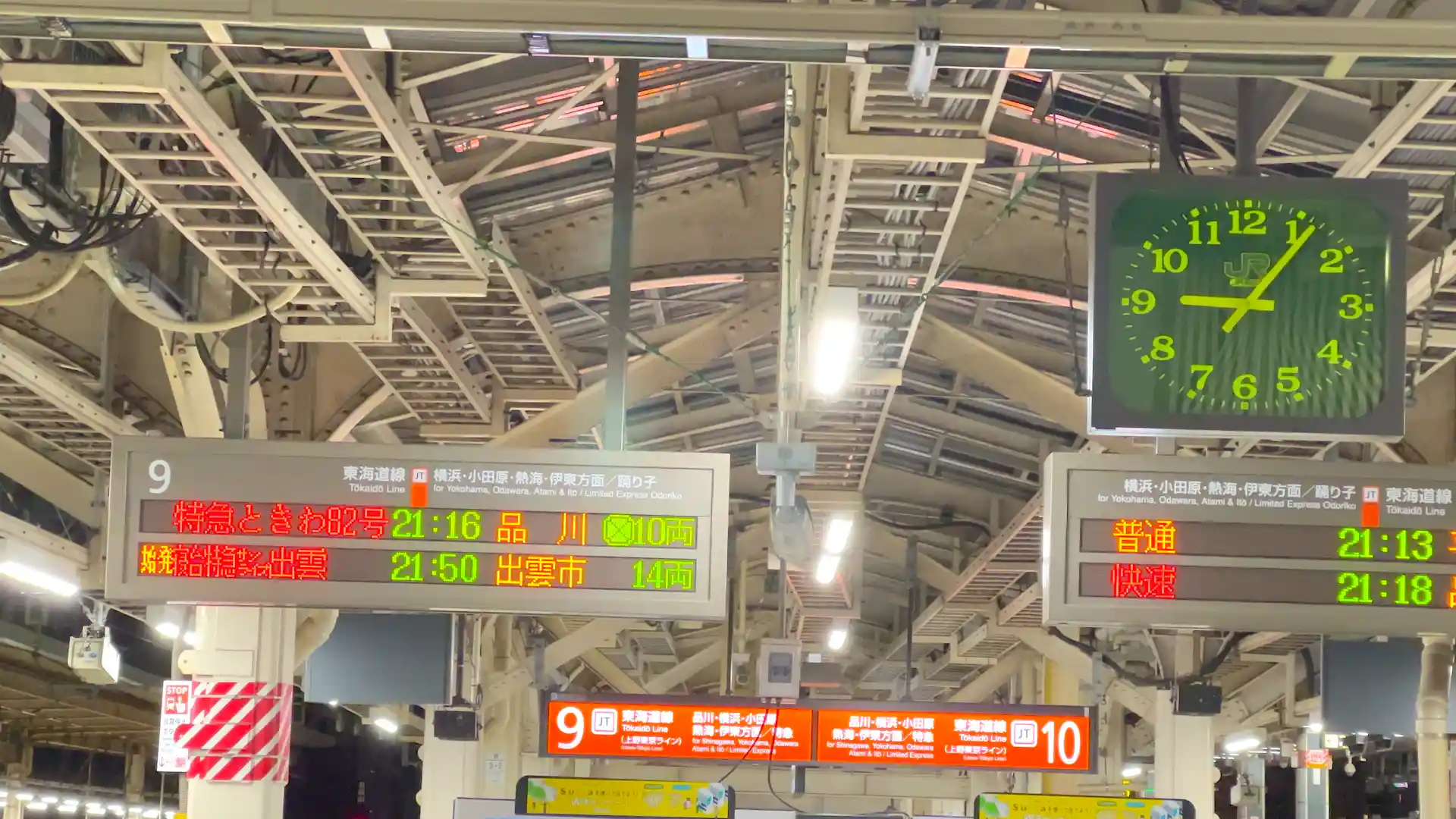
| Station | Seto | Izumo | Izumo (No.91) | Station | Izumo (No.92) | Seto | Izumo |
| Tokyo | 21:50 | 22:21 | Takamatsu | – | 21:26 | – | |
| Yokohama | 22:15 | 22:44 | Sakaide | – | 21:44 | – | |
| Atami | 23:23 | ↓ | Kojima | – | 22:01 | – | |
| Numazu | 23:39 | ↓ | Izumoshi | 14:05 | || | 18:57 | |
| Fuji | 23:53 | ↓ | Shinji | 14:25 | || | 19:11 | |
| Shizuoka | 0:20 | ↓ | Matsue | 14:48 | || | 19:27 | |
| Hamamatsu | 1:12 | ↓ | Yasugi | 15:15 | || | 19:44 | |
| Osaka | ↓ | 6:04 | Yonago | 15:25 | || | 19:54 | |
| Sannomiya | ↓ | 6:27 | Niimi | 17:16 | || | 21:19 | |
| Himeji | 5:25 | 7:20 | Bitchu-Takahashi | 18:06 | || | 21:48 | |
| Okayama | 6:27 | 8:48 | Kurashiki | 19:14 | || | 22:14 | |
| Kurashiki | || | 6:46 | 9:06 | Okayama | 19:41 | 22:34 | |
| Bitchu-Takahashi | || | 7:14 | 9:36 | Himeji | 21:04 | 23:33 | |
| Niimi | || | 7:43 | 10:23 | Sannomiya | 21:52 | 0:11 | |
| Yonago | || | 9:05 | 12:02 | Osaka | 22:29 | 0:33 | |
| Yasugi | || | 9:16 | 12:12 | Hamamatsu | ↓ | ||
| Matsue | || | 9:33 | 12:37 | Shizuoka | ↓ | 4:38 | |
| Shinji | || | 9:47 | 12:59 | Fuji | ↓ | 5:09 | |
| Izumoshi | || | 10:00 | 13:32 | Numazu | ↓ | 5:25 | |
| Kojima | 6:52 | – | – | Atami | ↓ | 5:43 | |
| Sakaide | 7:09 | – | – | Yokohama | 5:56 | 6:44 | |
| Takamatsu | 7:27 | – | – | Tokyo | 6:23 | 7:08 | |
| Tadotsu | (8:25) | – | – | – | – | – | – |
| Zentsuji | (8:32) | – | – | – | – | – | – |
| Kotohira | (8:39) | – | – | – | – | – | – |
Departure and arrival times may vary depending on the current timetable.
For the latest information, please check Jorudan.
How to Book the Sunrise Seto & Izumo

- Midori Ticket Vending Machine
- Midori Ticket Office (JR Ticket Counter)
- Online Reservation
- Travel Agency
For those who have a computer or smartphone, online reservations are recommended.

JR Official Website – List of Stations with “Midori no Madoguchi” Counters
Sunrise Seto & Izumo – Fees, Prices, and Fares
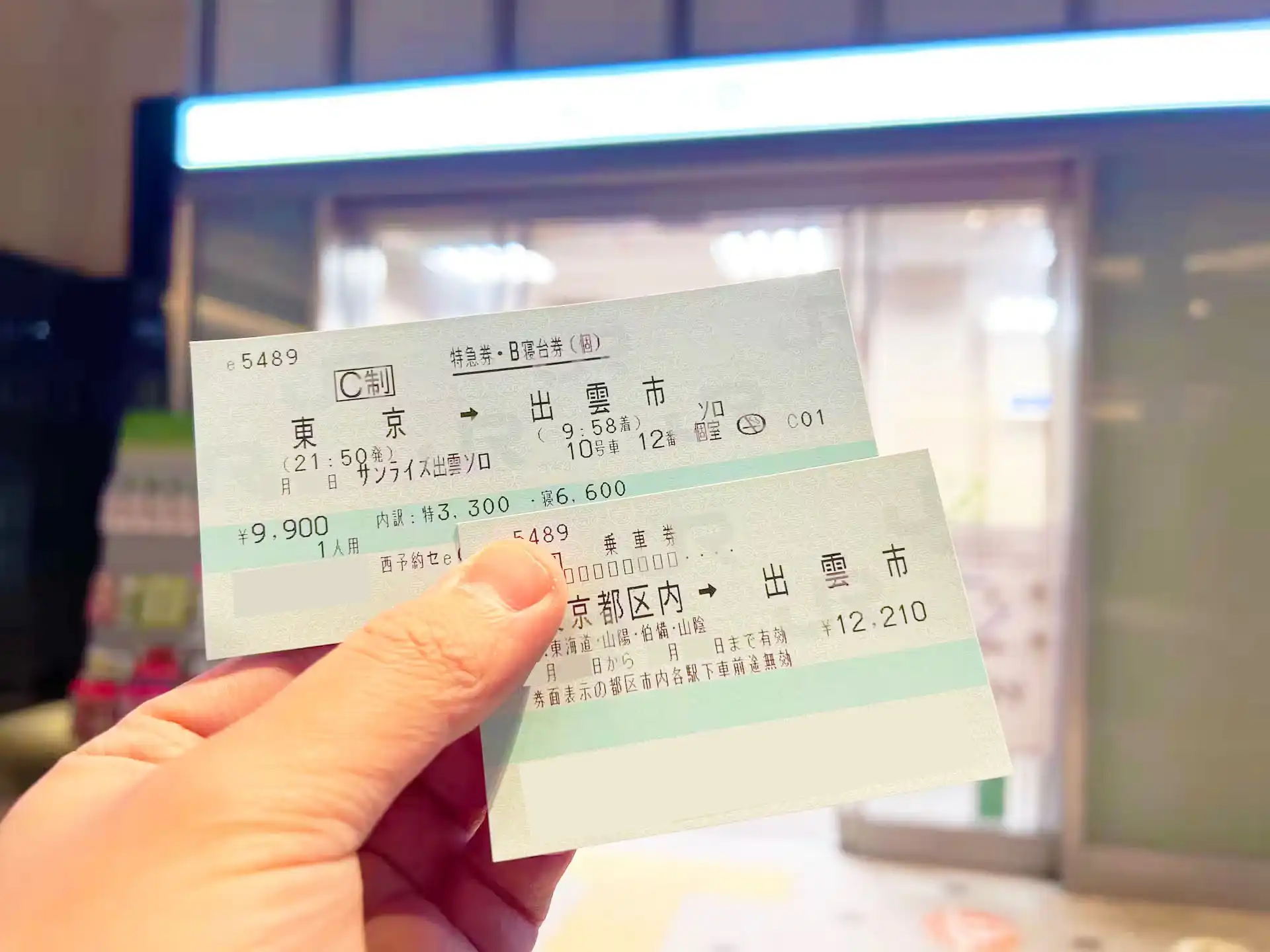
| Type | Room Type | Sleeper Fee | Notes |
| A Class Private Room (1 person) | Single Deluxe | ¥13,980 | A Class private room for 1 person |
| B Class Private Room (1 person) | Single Twin | ¥9,600 | B Class private room for 1 or 2 persons |
| B Class Private Room (1 person) | Single | ¥7,700 | B Class private room for 1 person |
| B Class Private Room (1 person) | Solo | ¥6,600 | B Class private room for 1 person |
| B Class Private Room (2 persons) | Sunrise Twin | ¥15,400 (for 2 persons) ※1 | B Class private room for 2 persons |
| B Class Private Room (2 persons) | Single Twin | ¥15,100 (for 2 persons) ※1 | B Class private room for 1 or 2 persons |
| B Class Seat (shared room) | Nobinobi Seat | ¥530 (regular season) ¥730 (busy season) ¥300 (off-peak season) | Ordinary car reserved seat |
On the Sunrise Izumo / Seto, you pay a combination of basic fare, limited express surcharge, and sleeper fee.
■Nobinobi Seat (cheapest shared option)
・Basic fare (¥12,210) + Limited Express Surcharge (¥3,300) + Sleeper Fee (¥530)
・Total|¥16,040
■Solo (cheapest private room)
・Basic fare (¥12,210) + Limited Express Surcharge (¥3,300) + Sleeper Fee (¥6,600)
・Total|¥22,110
The price difference between a private room and a shared seat is ¥6,070.
How to Save Money
If the one-way distance on the Sunrise train is over 601 km, booking a round trip gives a 10% discount on the basic fare.
Sleeper fees and limited express surcharges are not eligible for discounts.
Sunrise Seto & Izumo – Cheapest Shared Seat vs Cheapest Private Room
Cheapest Shared Seat – Nobinobi Seat
Nobinobi Seat Specifications
- Located in cars 5 and 12 (28 seats per car)
- Length: 2.08 m, Width: 85 cm
Nobinobi Seat Amenities
- Supplied items: disposable cup, 1 comforter, 1 thin cloth
- Partition for upper body privacy
- Floor heating with carpet
- Ceiling air conditioning
- Curtain to block the aisle view
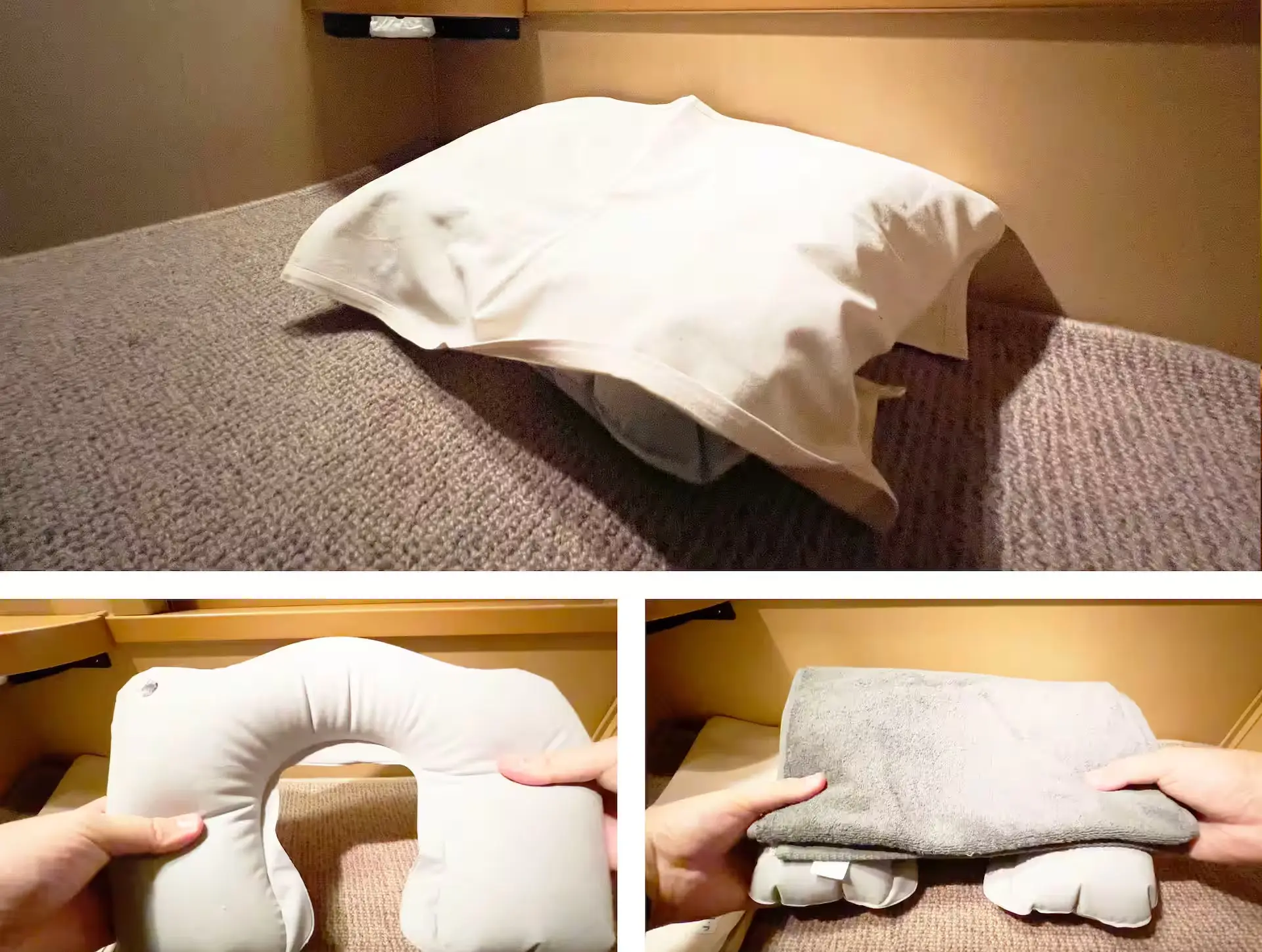

Cheapest Private Room – B Class Solo
Solo Room Specifications
Located in cars 3 and 10 (20 rooms total)
Bed size: Length 1.96 m, Width 75 cm
Even-numbered rooms are upper, odd-numbered rooms are lower
Solo Room Amenities
Includes 4-piece set: mattress, comforter, pillow, pajamas
Comforter is fire-resistant (110 cm × 190 cm)
Pillow: pipe pillow with straw-like filling
Pajamas labeled “J-LINEN”
Air conditioning is quite strong, like medium fan speed.

Sunrise Seto & Izumo – How to Use the Shower
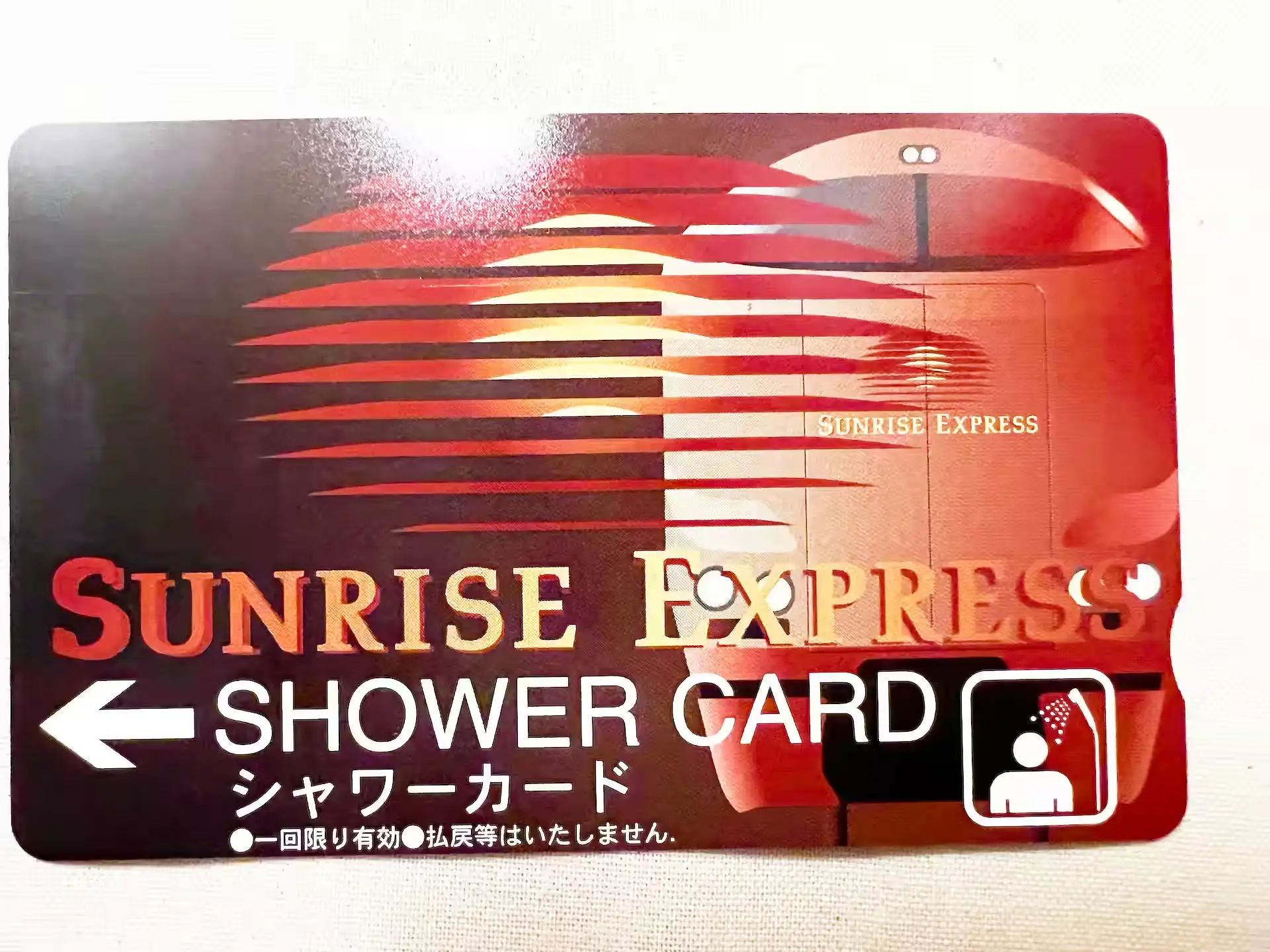
To use the shower room, you need a “shower card” (¥330) that allows 6 minutes of use per card.
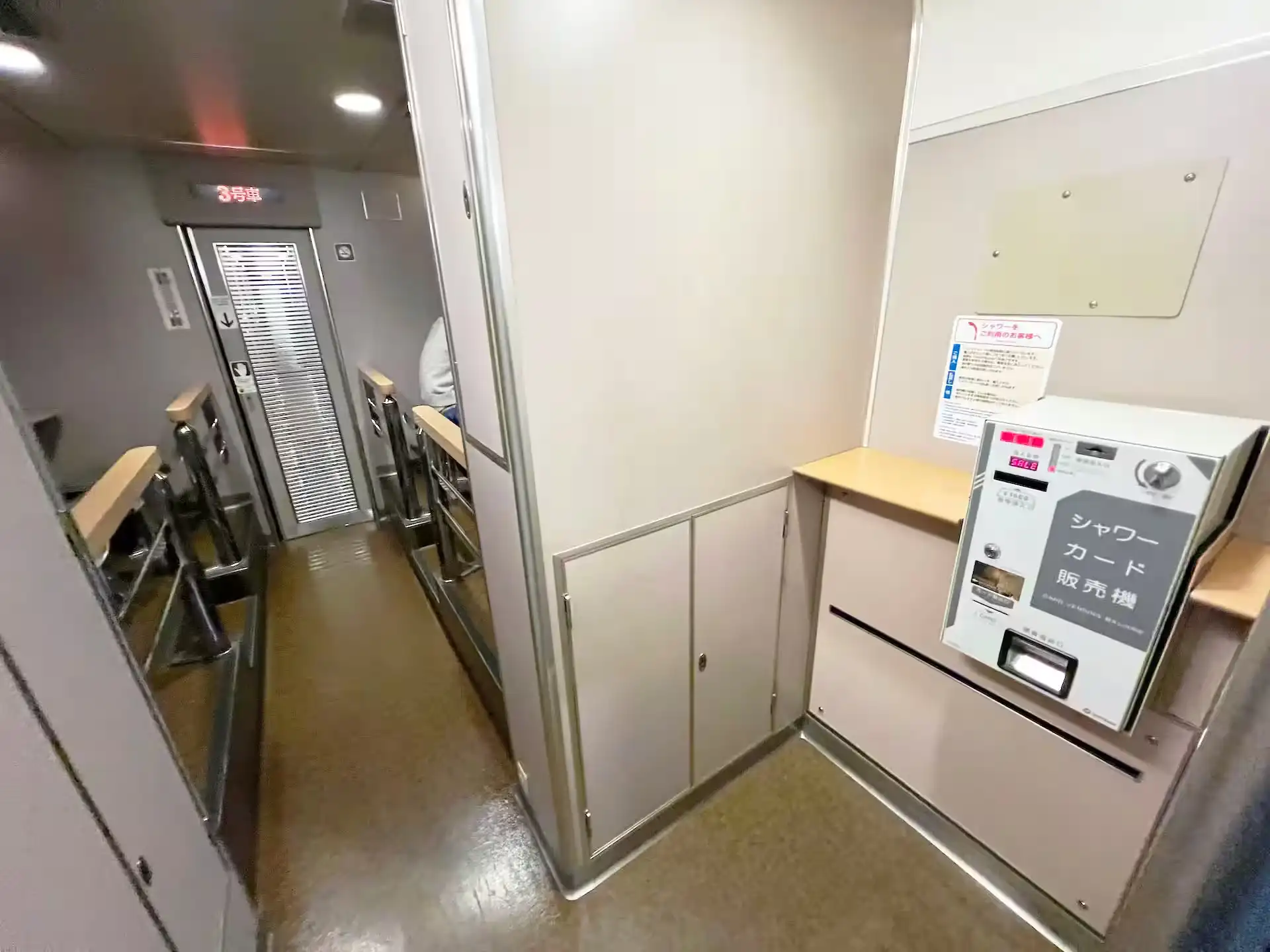
The vending machines are located next to the lounge in cars 3 and 10.
Due to water tank capacity, about 20 cards per car, total about 40 cards.
Shower cards sell out very quickly, so be careful!

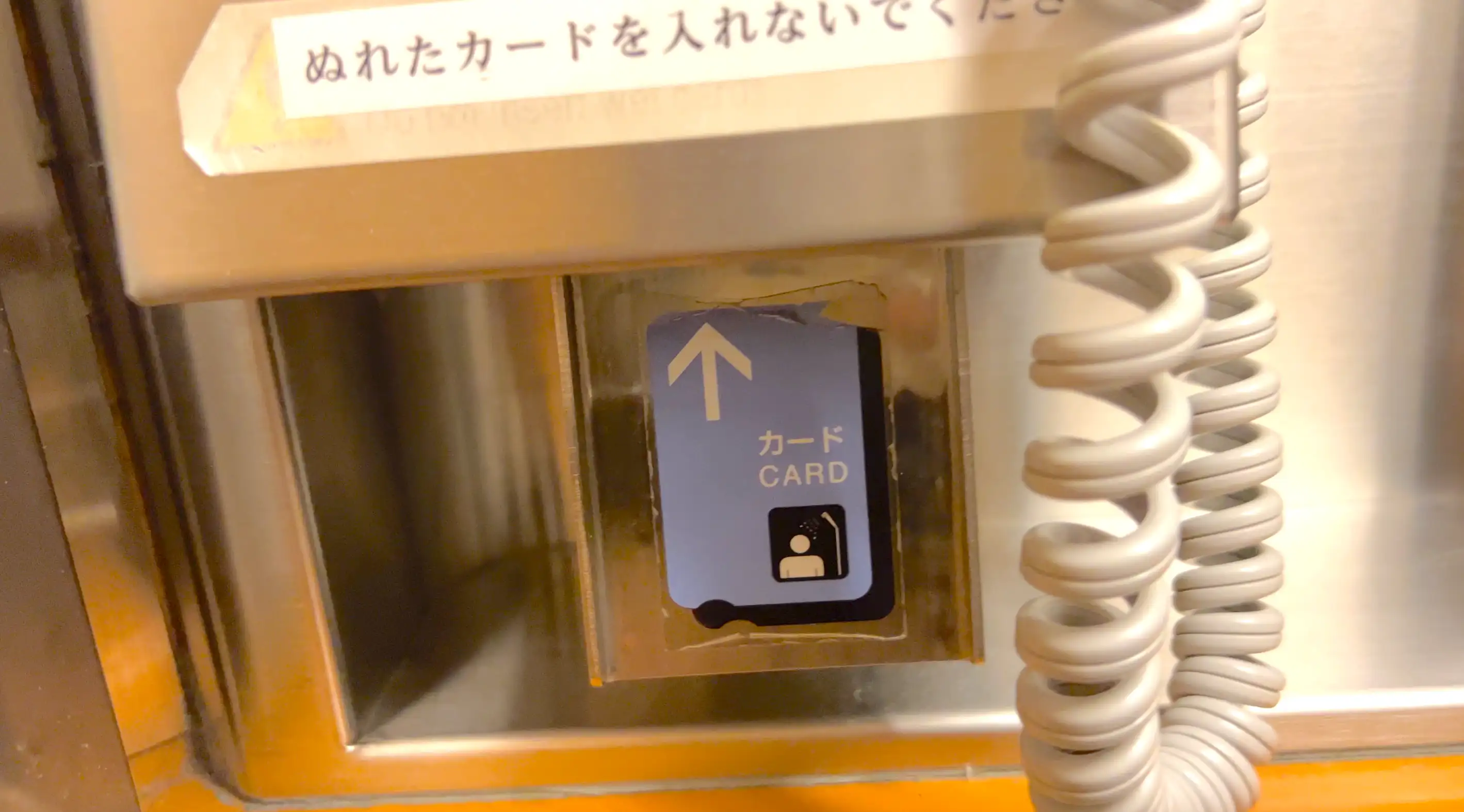
Insert the shower card into the reader in the changing area to use the shower.
Impressions of the Shower Card Battle
- Arrived at the platform 1 hour before departure, 4–5 people were already waiting.
- When shower card sales started, the train atmosphere was intense.
- The passage to the room is narrow, it took time to get back.
- No time to take out the wallet, best to hold ¥330 and line up.
Sunrise Seto & Izumo Frequently Asked Questions (FAQ)
The difference between Sunrise Seto and Sunrise Izumo is the destination.
■ Sunrise Seto: Cars 1–7
Tokyo → Takamatsu (Kagawa Prefecture)
■ Sunrise Izumo: Cars 8–14
Tokyo → Izumo (Shimane Prefecture)
Coupling and decoupling operations take place at Okayama Station.
■ Watching decoupling
Only available for passengers of the Izumo-bound train from Tokyo
■ Watching coupling
Only available for passengers of the Seto-bound train to Tokyo from Takamatsu
The Sunrise Seto & Izumo trains are the only regularly operated sleeper trains currently in service in Japan.
Although they have been in service for over 25 years, there are no successor trains, and they are maintained while in operation.
The easiest seats to book are the shared-type “Nobinobi Seats“.
Private rooms (Single Deluxe, Single Twin, Single, Solo) are very popular, and during major holidays or winter, reservations can be fully booked up to one month in advance.
“10 o’clock booking” refers to reserving seats right when sales start at 10:00 AM.
Tickets for travel one month in advance are sold at this time, but it is very competitive.
■ Tokyo → Takamatsu (Sunrise Seto): about 9 hours 30 minutes
■ Tokyo → Izumo-shi (Sunrise Izumo): about 12 hours 10 minutes
Reservations can be made through JR West’s “e5489”, at station “Midori no Madoguchi” ticket counters, “Midori no Kenbaiki Plus” machines, or travel agencies.
■ Reservations nationwide start at 10:00 AM, one month before the travel date
■ Private rooms are popular, so early booking is recommended
■ Single: for 1 person, most popular
■ Solo: slightly smaller for 1 person, more affordable
■ Single Twin: for 1–2 people, includes an extra bed
■ Sunrise Twin: for 2 people
■ A-class Single Deluxe: top-tier, includes a private shower card and washbasin
■ Nobinobi Seat (treated as a reserved seat): simple sleeping space, inexpensive and popular
If booked via “e5489”, tickets can be collected before boarding at:
■ Midori no Madoguchi
■ Midori no Kenbaiki machines
■ Midori ticket pickup machines
Some cars have shared shower rooms.
■ A shower card (320 yen) is required for use, and availability is limited
■ A-class Single Deluxe rooms can use the shower for free
Private rooms are standard, so it is generally safe.
■ There is no women-only area, but private rooms (Single, Solo) are recommended
■ The train is well-maintained and safety is highly rated
They are carpeted semi-private spaces.
■ Can be used with only a reserved seat ticket
■ No curtains or doors, so not ideal for those who prioritize privacy
■ Popular for budget-conscious travelers
■ Power outlets: available in some private rooms (A & B-class rooms are equipped)
■ Wi-Fi: not available
Bringing a mobile battery is recommended if you need to charge devices.
Tickets go on sale at 10:00 AM, one month before departure from the origin station.
Reservations via “e5489” include:
■ Nobinobi Seats (reserved ordinary seats)
■ 1-person A-class sleeper rooms (Single Deluxe)
■ 1-person B-class sleeper rooms (Single Twin, Single, Solo)
■ 2-person B-class sleeper rooms (Sunrise Twin)
On “Ekinet”, only Nobinobi Seats can be reserved; sleeper tickets cannot be booked.
There is no onboard sales.
■ Purchase bento boxes and drinks before boarding
■ Water is available from onboard vending machines, but may sell out
■ Bring extra drinks just in case
Since onboard amenities are limited, bringing the following items will make your trip more comfortable:
■ Towels, toothbrushes, and other personal care items
■ Snacks and drinks
■ Motion sickness medicine if needed
In principle, intermediate stops cannot be used for disembarking.
■ At Okayama Station, you may temporarily leave the train during the splitting operation (around 5–10 minutes)
※Information is as of December 15, 2025.
※Accuracy and currency are not guaranteed. Use at your own risk.
※Content is for informational purposes only and is not a substitute for professional advice.
※Details, plans, and prices may change. Please check official sources.
※We are not responsible for external links or their content.
※Content is protected by copyright. Unauthorized reproduction or distribution is prohibited.
※This disclaimer may change without notice.
※We are not liable for any damages from use of this site.
※We are not responsible for damages from technical issues or interruptions.
※We respect all religions and beliefs; no discriminatory intent.
